#but was like... invented... with the invention of public schools... about 200 years ago
Explore tagged Tumblr posts
Text
In an age that witnessed considerable support for social improvement, public schools often took center stage. By the 1830s, a chorus of reform-minded people began to sing the praises of free, tax-supported schools: Thaddeus Stevens, later a prominent Republican activist in Pennsylvania; Catharine Beecher, advocate of more educational opportunities for women; Caleb Mills, an evangelical minister who later became Indiana's leading common school advocate; and even notable Southerners, who faced the greatest opposition and whose efforts bore the least fruit. Enthusiasm for social improvement through education flourished. Since the turn of the century, countless pamphlets, speeches, reports, petitions, testimonials, newspaper editorials, books, and articles had promoted the importance of education in a republic. A few dozen educational periodicals also popularized the cause of learning by promoting a class-inclusive school system, especially for white children.
In Philadelphia, New York, and other cities, the editors of workingmen's newspaper - the voice of the skilled artisan minority - despaired over the fate of youth as apprenticeships declined and unskilled factory labor increased; they endorsed instituting a common system and eliminating the stigma attached to free schools. "I think that no such thing as charities should be instituted for the instruction of youth," wrote one articulate worker in the Mechanics' Free Press in Philadelphia in 1828. He favored free schools dependent not on "private charities" but "founded and supported by the government itself." One Ohioan added, "Unless the Common Schools can be made to educate the whole people, the poor as well as the rich, they are not worthy of the support of the patriot or the philanthropist." "Give to education... a clear field and fair play," said a recent immigrant in A Treatise on American Popular Education in 1839, "and your poor houses, lazarettos, and hospitals will stand empty, your prisons and penitentiaries will lack inmates, and the whole country will be filled with wise, industrious, and happy inhabitants. Immorality, vice and crime, disease, misery and poverty, will vanish from our regions, and morality, virtue and fidelity, with health, prosperity, and abundance, will make their permanent home among us.”
Born in an age when millennial ideals, such as universal peace and prosperity following Christ's imminent return to earth, influenced wide sectors of the population, the common schools became a useful barometer of the extensive social changes that transformed the nation before the Civil War. Cities, factories, and foreign immigration generated moral panic and social fears among many northern reformers, whose search for solutions to public ills centered on a more expansive public school system. Reflecting the contradictory passions of the reformers, schools not only favored greater access to literacy and academic study but simultaneously downplayed intellectual achievement by elevating the moral aims of instruction. America's ambivalent attitude toward the life of the mind and scholarship thus found expression in the nation's emerging school system, where character development and moral uplift took precedence even as lifeless instruction in academic subjects predominated. Setting a pattern that long endured, reform-minded citizens increasingly assumed that individual welfare and social progress depended on an extensive network of public schools.
william j. reese, america's public schools from the common school to "no child left behind"
#posting this mostly because as you all know#i find 'public schools were designed to create mindless capitalism robots'#an unbearably annoying common take#but i think it's also worth considering that like#the idea of public schools as key to the well-being of a nation#is something we take for granted now#but was like... invented... with the invention of public schools... about 200 years ago#it's not a lesson drawn from something that actually happened. lol.#media 2k24#edublogging#sigh... i'd resisted making a tag for that on this blog but the evidence is against me i fear...
25 notes
·
View notes
Text
Fanfiction Masterlist
Irondad/Spiderson Series:
Strands in the Rope series: A collection of chronological stories exploring how the relationship Tony and Peter seemed to have in Infinity War could have been built. Post Homecoming. Mostly from Tony's perspective, and is canon-complicit up until Infinity War. Complete!
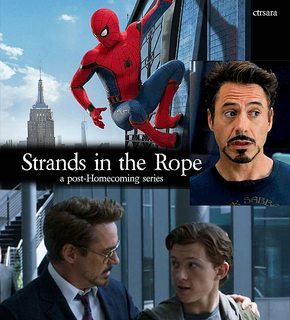
Unbroken Strands series: A continuation of Strands in the Rope. No more canon, though. Doing something totally different with these characters! Picking up where Infinity War would have happened. In progress, hoping to update one to three times a month.

From the Same Star series: Soulmate AU featuring Peter Parker/Original Character(romantic soulmates) and Peter Park & Tony Stark (father/son, platonic soulmates). The first two installments (Complete!) are set about 11 years after Homecoming (Infinity War and Endgame didn't happen), and the third, (Hardly Coincidence) is a prequel I’m working through, and tells the story of how Peter/Tony found out they were soulmates and how they dealt with that.
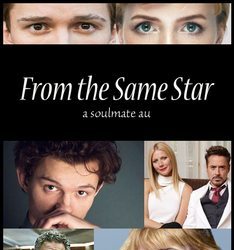
Individual Stories and Collections:
200 Park Avenue (5+1) Peter hasn't seen Mr. Stark, or been able to go out as Spiderman since he turned down his invitation to join the Avengers a few weeks ago. He ends up at Stark Tower rather randomly, finding an unlikely hero in Mr. Stark's AI, then keeps returning for different purposes. Or 5 Times Peter Visited Stark Tower and 1 Time He Stayed
5 Times Peter Scared the Crap Out of Tony + 1 Time He Scared Everyone Else : Peter Parker is super animated, until he isn't. His habit of falling into a dead sleep at weird times or in weird places scares Tony on a regular basis as he gets to know (and love) him.
5 Times Tony’s Intern Almost Called Him "Dad" + 1 Time He Did The title explains it. :) A quick 5+1 for Comfortember 2023.
Comfortember 2022 One-Shots: Just what it sounds like. Short(ish) and sweet. Not connected, except by the event. (Also see the Comfortember 2023 collection!)
Emergency Contacts : Flash gets a hold of Peter's phone at a party, and can only access the emergency contacts. As a joke, in the heat of the moment, he texts a ransom message to the contact that says "Dad." He didn't expect a very angry Iron Man to show up minutes later.
Just Another FRIDAY (5+1): Peter's connection to Tony is public record if you know where to look. Peter still wants to stay at Midtown. To keep him safe, Tony simply installs FRIDAY in the school. Lots of busybody-ing, some helpfulness, a bit of hilarity, and a little saving-the-day ensue. Ned's POV.
Let Us Handle Them Carefully: Peter Parker lives with his parents in Manhattan, but spends as little time as possible at home. Ned and MJ have been a great support at he tries to navigate the after-effects of being bitten by an experimental spider from their lab, but he's trying to mostly figure that out on his own. His parent want him to apply for the Young Interns program at Stark Industries, even though they don't think much of Tony Stark. Post Age of Ultron, and there is unrest between the team and the governments, but Civil War is not a thing in this AU.
Visiting Hours : In a universe where he never invented time travel, and never brought anyone back, Tony Stark gets a late night visitor he never could have expected. Complete for now, but future chapters or “visits” could happen if I feel inspired.
(plus some other small stories I didn't want to write out here)
55 notes
·
View notes
Photo

The Insanity of Sustainability “Only the Dead Have Seen the End of War” – Plato. This wisdom is as valid today as it was 2,500 years ago. Wars go on and on. They are exactly the anti-dote of sustainability. They may be the only “sustainability” modern mankind knows – endless destruction, killing, shameless exploitation of Mother Earth and its sentient beings, including humans. Yes, we are hellbent towards “sustainably”, destroying our planet and all its living beings, with wars and conflicts and shameless exploitation of Mother Earth – and the people who have peacefully inhabited her lands for thousands of years. All for greed, and more greed. Greed and destruction are certainly “unsustainable” features of our western “civilization”. Not to worry, in the grand scheme of things, Mother Earth will survive. She will cleanse herself by shaking and shedding off the destroyers, the annihilators – mankind. Only the brave will survive. Indigenous people, who have abstained from abject consumerism and instead worshipped Mother Earth and expressed their gratitude to her daily gifts. There are not many such societies left on our planet. In the meantime, we lie about the sustainability we live in. We lie to ourselves and to the public at large around us. We make believe sustainability is our cause – and we use the term freely and constantly. Most of us don’t even know what it is supposed to mean. “Sustainability” and “sustainable” anything and everything have become slogans; or household words. Such buzz-words, repeated over and over again, are made for promoting ideas, and for bending people’s minds to believe in something that isn’t. We pretend and say that we work sustainably, we develop – just about anything we touch – sustainably, and we project the future in a most sustainable way. That’s what we are made to believe by those who coined this most fabulously clever, but untrue term. It is the 101 of a psycho-factory. As Voltaire so pointedly said, “Those who can make you believe absurdities; can make you commit atrocities.” Sustainability. What does it mean? It has about as many interpretations as there are people who use the term – namely none specific. It sounds good. Because it has become – well, a household word, ever since the World Bank invented, or rather diverted the term for “sustainable development” in the 1990s, in connection, first, with Global Warming, then with Climate Change – and now back to both. Imagine! – There was a time at the World Bank – and possibly other institutions, when every page of almost every report had to contain at least once the word “sustainable”, or “sustainability”. Yes, that’s the extent of insanity propagated then – and today, it follows on a global scale, more sophisticated – the corporate world, the mega-polluters make it their buzz-word – our business is sustainable, and we with our products promote sustainability – worldwide. In fact, sustainable, sustainable growth, sustainable development, sustainable this and sustainable that – was originally coined by the United Nations Conference on Environment and Development (UNCED), also known as the Rio de Janeiro Earth Summit, the Rio Summit, the Rio Conference, and the Earth Summit – held in Rio de Janeiro from 3 to 14 June in 1992. The summit is intimately linked to the subsequent drive on Global Warming and Climate Change. It exuded projections of sea level risings, of disappearing cities and land strips, like Florida and New York City, as well as parts of California and many coastal areas and towns in Africa and Asia. It painted endless disasters, droughts, floods and famine as their consequence, if we – mankind – didn’t act. This first of a series of UN environment / climate summits is also closely connected with the UN Agendas 2021 and 2030. The UN Agenda 2030 incorporates or uses as main vehicle – the 17 “Sustainable Development Goals (SDG)”. In a special UN Conference in 2016, Bill Gates was able to introduce into the 16th SDG “Promote peaceful and inclusive societies for sustainable development, provide access to justice for all and build effective, accountable and inclusive institutions at all levels”, the 9th of the 12 sub-targets – “By 2030, provide legal identity for all, including birth registration.” This is precisely what Bill Gates needs to introduce digital IDs – most likely injected via vaccines, beginning with children from developing countries – i.e. the poor and defenseless are time and again used as guinea pigs. They won’t know what happens to them. First trials are underway in one or several rural schools in Bangladesh – see this and this. These 17 sustainable development goals, are all driving towards a Green Agenda, or as some prominent “left” US Democrat-political figures call it, the New Green Deal. It is nothing else but capitalism painted Green, at a horrendous cost for mankind and for the resources of the world. But it is sold under the label of creating a more sustainable world. Never mind, the enormous amounts of hydrocarbons – the key polluter itself – that will be needed to convert our “black” economy into a Green economy. Simply because we have not developed effective and efficient alternative sources of energy. The main reasons for this are the strong and politically powerful hydrocarbon lobbies. The energy cost (hydrocarbon-energy from oil and coal) of producing solar panels and windmills is astounding. So, today’s electric cars – Tesla and Co. – are still driven by hydrocarbon produced electricity – plus their batteries made from lithium destroy pristine landscapes, like huge natural salt flats in Bolivia, Argentina, China and elsewhere. The use of these sources of energy is everything but “sustainable”. See also Michael Moore’s film“Planet of the Humans”. Hydrogen power is promoted as the panacea of future energy resources. But is it really? Hydrocarbons or fossil fuels today amount to 80% of all energy used worldwide. This is non-renewable and highly polluting energy. Today to produce hydrogen is still mostly dependent on fossil fuels, similar to electricity. As long as we have purely profit-fueled hydrocarbon lobbies that prevent governments collectively to invest in alternative energy research, like solar energy of the 2nd Generation, i.e. derived from photosynthesis (what plants do), hydrogen production uses more fossil fuels than using straight gas or petrol-derived fuels. Therefore hydrogen, say a hydrogen-driven car, maybe as much as 40% – 50% less efficient than would be a straight electric car. The burden on the environment can be considerably higher. Thus, not sustainable with today’s technology. To enhance your belief their slogans of “sustainability”, they put up some windmills or solar cells in the “backyard” of their land- and landscape devastating coal mines. They will be filmed along with their “sustainable” buzz-words. *** The World Economic Forum (WEF) and the IMF are fully committed to the idea of the New Green Deal. For them it is not unfettered neoliberal capitalism – and extreme consumerism emanating from it, that is the cause for the world’s environmental and societal breakdown, but the use of polluting energies, like hydrocarbons. They seem to ignore the enormous fossil fuel use to convert to a green energy-driven economy. Capitalism is OK, we just have to paint it green (take a look at this). *** Let’s look at what else is “sustainable”- or not. Water use and privatization – Coca Cola tells us their addictive and potentially diabetes-causing soft drinks are produced “sustainably”. They tout sustainability as their sales promotion all over the world. They use enormous amounts of pristine clean drinking water – and so does Nestlé to further promote its number One business branch, bottled water. Nestlé has overtaken Coca Cola as the world number One in bottled water. They both use subterranean sources of drinking water – least costly and often rich in minerals. Both of them have made or are about to sign agreements with Brazil’s President to exploit the world’s largest freshwater aquifer, the Guarani, underlaying Brazil, Argentina, Paraguay and Uruguay. They both proclaim sustainability. Both Coca Cola and Nestlé have horror stories in the Global South (i.e. India, Brazil, Mexico and others), as well as in the Global North. Nestlé is in a battle with the municipality of the tiny Osceola Township, Michigan, where residents complain the Swiss company’s water extraction techniques are ruining the environment. Nestlé pays the State of Michigan US$ 200 to extract 130 million gallons of water per year (2018). Through over-exploitation both in the Global South and the Global North, especially in the summer, the water table sinks to unattainable levels for the local populations – which are deprived of their water source. Protesting with their government or city officials is often in vain. Corruption is all overarching. – Nothing sustainable here. These are just two examples of privatizing water for bottling purposes. Privatization of public water supply on a much larger scale is at the core of the issue, carried out mostly in developing countries (the Global South), mainly by French, British, Spanish and US water corporations. Privatization of water is a socially most unsustainable feat, as it deprives the public, especially the poor, from access to their legitimate water resources. Water is a public good – and water is also a basic human right. On 28 July 2010, through Resolution 64/292, the United Nations General Assembly explicitly recognized the human right to water and sanitation and acknowledged that clean drinking water and sanitation are essential to the realization of all human rights. The public water use of Nestlé and Coca Cola – and many others, mind you, doesn’t even take account of the trillions of used plastic bottles ending up as uncollected and non-recycled waste, in the sea, fields, forests and on the road sides. Worldwide less than 8% of plastic bottles are recycled. Therefore, nothing of what Nestlé and Coca Cola practice and profess is sustainable. It’s an outright lie. Petrol industry - BP with its green business emblem, makes believe – visually, every time you pass a BP station – that they are green. PB proclaims that their oil exploration and exploitation is green and environmentally sustainable. Let’s look at reality. The so far considered largest marine oil spill in the history of the petroleum industry, was the Deepwater Horizon oil spill. It was a giant industrial disaster that started on April 20, 2010 and lasted to 19 September 2010, in the Gulf of Mexico on the BP-operated Macondo Prospect, spilling about 780,000 cubic meter of raw petroleum over an area of up to 180,000 square kilometers. BP promised a full cleanup. By February 2015 they declared task completed. Yet at least 60% of oil and tar along the sea shore and beaches have not been cleaned up – and may never be removed. – Where is the sustainability of their promise? Another outright lie. BP and other oil corporations also have horrendous human rights records – just about everywhere they operate, mostly in Africa and the Middle East, but also in Asia. The abrogation of human rights is also an abrogation of sustainability. In this essay BP is used as an example for the petrol industry. None of the petrol giants operate sustainably anywhere in the world, and least where water table-destructive fracking is practiced. Sustainable mining – is another flagrant lie. But it sells well to the blinded people. And most of the civilized world is blinded. Unfortunately. They want to continue in their comfort zone which includes the use of copper, gold and other precious metals and stones, rare earths for ever more sophisticated electronic gear, gadgets and especially military electronically guided precision weaponry – as well as hydrocarbons in one way or another. Sustainable mining of anything unrenewable is a Big Oxymoron. Anything you take from the earth that is non-renewable is by its nature not sustainable. Its simply gone. Forever. In addition to the raw material not being renewable, the environmental damage caused by mining – especially gold and copper – is horrendous. Once a mine is exploited in a short 30- or 40-years’ concession, the mining company leaves mountains of contaminated waste, soil and water behind – that takes a thousand years or more to regenerate. Yet, the industry’s palaver is “sustainability”, and the public buys it. In fact, our civilization’s sustainability is zero. Aside from the pollution, poisoning and intoxication that we leave around us, our mostly western civilization has used natural resources at the rate of 3 to 4 times in excess of what Mother Earth so generally provides us with. We, the west, had passed the threshold of One in the mid-sixties. In Africa and most of Asia, the rate of depletion is still way below the factor of One, on average somewhere between 0.4 and 0.6. “Sustainability” is a flash-word, has no meaning in our western civilization. It is pure deception – self-deception, so we may continue with our unsustainable ways of life. That’s what profit-bound capitalism does. It lives today with ever more consumerism, more luxury for the ever-fewer oligarchs – on the resources of tomorrow. The sustainability of everything is not only a cheap slogan, it’s a ruinous self-deception. A Global Great Reset is needed – but not according to the methods of the IMF and WEF. They would just shovel more resources and assets from the bottom 99.99% to the top few, painting the “new” capitalism a shiny bright green – and fooling the masses. We, The People, must take The Reset in our own hands, with consciousness and responsibility. So, We the People, forget sustainable but act responsibly.
2 notes
·
View notes
Text
BnHA Chapter 227: Basically Just Me Saying “Holy Shit” a Bunch
Previously on BnHA: We went on a semi-enlightening romp into Toga’s past. Basically she was an adorable child who just so happened to have a taste for blood. And whoever’s job is was to explain to her, “hey Toga, I know you like blood, but other people like being alive, so, you know. Let’s explore some other options for you,” they basically dropped the ball there. So after she murdered her hapless Deku-looking classmate in middle school, she went on the run, and we basically know the rest. Back in the present, Toga had just been blown up from the inside out as you may recall, so she spent most of the chapter kind of out of it. At one point Kizuki even started talking about her like she was already dead, reassuring her that she’d become a martyr for the Army’s cause (which, no thanks). But then Toga managed to stumble to her feet and transform into Ochako as she tried to flee. It was revealed that while transformed, she can use the quirk of whoever she’s turned into, and she proceeded to demonstrate this by floating Kizuki (and half her redshirt goons) a hundred feet into the air before dropping her back down to the pavement. Yeah. So I’m pretty sure she’s dead now. Ah well.
Today on BnHA: Toga passes out in a shed after a job well done. We learn that the MLA is recording all of the fighting, most likely for propaganda purposes because as we have previously established they’re a bunch of dicks. Hanabata confirms that Kizuki is dead and gets the Army all fired up. They charge at Tomura, who is really fucking sleep-deprived you guys, and as he stands there blinking at them he has another flashback. Turns out the little girl from the previous flashback was his sister, and back when they were cute lil munchkins and she was still alive (sob), she showed him a picture of Nana and told him that their grandma was a hero. Tomura doesn’t remember this clearly, but he remembers the accompanying emotions, which is enough to get me hyped out of my mind fyi. Back in the present, Tomura disintegrates I’m-gonna-go-with-about-200 Army henchpeople basically instantaneously without even touching some of them, which, oh shit. And then Dabi is all “oh cool I want to do some mass murder too” but before he can let loose, some dude with fucking ice powers shows up to challenge him. I guess this means we’re never going to get Touya VS Shouto, or if we do it’s going to be very repetitive. But it’s not like I’m complaining either way. Here’s hoping the villain flashback trend continues next week because omfg.
(All comments are my unspoiled reactions from my first readthrough of this chapter like an hour ago lol. I did a quick edit for grammar and clarity, but aside from that this is as close to a live liveblog as I’m going to get. It took two-thirds of a year, but these recaps are finally caught up.)
this is so exciting guys. I mean, for me the reading process is basically the same, but the posting process is going to be a new one since I’ll be trying to get this up the same day once I’ve read it! so you can expect many exciting errors and brain farts! prepare for the full brunt of my unpolished rough draft thoughts!
so anyway, here’s Toga

lol so much to analyze here. real quick:
“sleepy.” if that isn’t the most relatable chapter title in the history of time, though
loving the “my villain academia” logo in the background! as far as I’m concerned that’s the official title of this arc
“the conclusion of the battles” y’all I read this and I was like “what?! already!?!” but then I realized they’re talking about volume 23, which features the conclusion of the joint training battle arc. so who knows how many more villain battlin’ chapters we’ve still got ahead. I have a feeling we’re already winding down, though
note how all of the stuffed animals are stabbed. ah this girl
it’s 2214, who the fuck still uses polaroid cameras. that would be like someone in our time using a [googles inventions from 200 years ago] modern suspension bridge. ...wait
anyway you guys maybe I should start reading the actual chapter already if I want any hope of actually getting this posted before fucking midnight though
oh hey, so Toga is dying in a shed you guys. fun

I’m not really thrilled about this! to be honest! I mean for fuck’s sake she’s only 17. she was blown up from the inside out. and although the consequences initially seemed to have possibly been handwaved, it appears that no one can escape BnHA’s realistic injury clause for long! so. yeah
I get why she hid, because it’s not like the others are just gonna drop everything to come help her (although Twice, though...), and there are enemies everywhere so this is probably safer. but it also means that if she passes out here there’s a good chance she’s not going to wake up again! and that is bad! that is very much not good
what she really needs to do is call Ujiko! hitch a ride out of there while you still can! he is a doctor, right? even if it is the questionable mad scientist type! worst case, you end up as a Noumu. actually, wait a sec, maybe we should think this through
and yet the fact that she’s still laughing, though. just. goddammit. I love her so much. I swear to god Toga if you fucking die...!!
so now she’s curling up in the fetal position and thinking “once again I’ve gotten closer to you”
yeah, Deku really does do this every other week. or he did for a little while at least sob
and now we are cutting to ReDestro who for some reason is monologuing about Toga!
oh right, because he had the cameras and shit set up to livestream that shit

okay but is it just me or is he not looking at any cameras. he’s just enjoying the view from his little observation tower same as before. does his quirk allow him to see everywhere at once or what
is it bad that I barely even paid attention to the actual content of his ramblings lol. it’s just the same old same old. blah blah society rejects anyone who’s different, it’s so unfair, blah blah
it’s not a bad point, mind you; it’s just that RD and his army are completely full of shit and acting like they’re so much better even though they’re just a bunch of mur-diddly-urderers. it’s like how PETA acts like they’re champions of animal rights when really they mostly just kill shelter animals, insult Steve Irwin, and claim that milk causes autism. but I digress sob
oh shit I forgot about this dude

here I was thinking there was only the one other miniboss to go before the big bad. silly me. how could I have forgotten that two page spread and our friend here with the Gorillaz mouth and the Beatles haircut
wow are you serious?
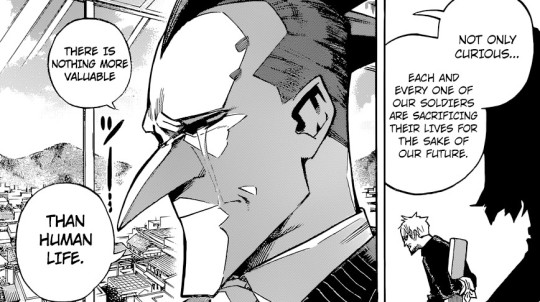
Giran sitting there with one skeptical eyebrow raised thinking about how these guys threatened to kill him in order to lure his friends out so that they could, you guessed it, kill them!
and also, way to completely disregard the dozens of other minions who already bit the dust before Kizuki. like, your entire town is basically doomed, guy. but sure let’s cry for the one dead villain who actually had a name though
holy shit you guys

are you telling me that’s why you were recording the whole thing? is that why you invited the League here in the first place?? for the fucking publicity? kill the bad guys and earn the public’s good will? did I miss that part of the planning sesh, or was this objective already painfully obvious and I somehow either missed it or forgot all about it?
either way it’s amazing how these guys become bigger assholes with each progressive chapter
oh now he’s explaining it all on the next page lol. so I guess I didn’t miss the memo, good
okay but first he’s getting real physical with my boy Giran here though

okay first of all, all he did was say “footage...?” like wth was so fucking impolite about that. and second, why do I get the feeling that there’s probably a fair percentage of people who read this chapter and got to this panel and now suddenly ship it sob
I mean, he just got so up close and personal though. all up in his face. this guy has such a weird energy and it’s really creeping me out now ngl
anyway so here we go with the explanations

holy shit you guyssssssssss

when did Giran get so fucking hot?? and is he single?! asking for a friend???!
anyway so now RD is wiping away his crocodile tears and says Giran is lacking in imagination
oh hey

what an interesting segue back to Tomura!
wow, Spinner’s asking how much longer until Big G wakes up, and Compress says one hour and twenty minutes. so that means they’ve already been at it for like an hour and fifteen minutes! minus however much time it took to warp over and then follow Back-Stab n’ Go out to the center of town for the ambush. even if that took a whole half hour they’ve still been fighting for a long time! but I guess they’re more than used to that by this point, thank you so much Ujiko and your six weeks of brutal endurance training
Spinner’s all “no matter how many we defeat, they just keep on coming!” and I know, dude, it’s almost like there’s over one hundred thousand of them or something dfskdj
although to be fair, probably not every last one of them is actually there. can you imagine. it might take a whole nother hour to beat them all
now Hanabata is driving in on the back of an election van. because apparently he just fucked right off in the middle of his fight with the League, and then came back. with a van
so he’s all “EVERYONE I HAVE SOME DEEPLY SADDENING NEWS” and oh my gosh what is it
oh

yeah dude we already been knew. RIP and all that
so the crowd is all distressed and asking what the Supreme Leader said
really?? that’s what they call him?? yeah you guys aren’t evil at all
and Hana quotes, “‘do not let her sacrifice be in vain’“
sorry bruh. but. it’s gonna be in vain. hate to break it to you

right??
GASP

TWICE STOP BEING AWED AT HANABATA’S INFLUENTIAL AURA AND START PAYING ATTENTION TO THE DUDE WHO’S SNEAKING UP BEHIND YOU AND TRYING TO SNATCH YOUR MASK OFF
anyway so in the meantime this is happening

maybe there are 100k of them. seems like there’s a lot. I do like that from this angle it appears that Tomura and the others have holed up in a relatively narrow alley, thus creating a choke point and limiting the number of enemies who can attack them all at once. although this panel does make it look like there’s just a big ol’ wave of bad guys surfing their way towards them though, so it remains to be seen how effective this strategy will actually be lol
eh?

yeah no shit boy you’ve been fighting Daruk from BotW for the last month and a half
anyway so apparently he’s feeling ~weird~ though

I shit you not guys, my sister was hospitalized a couple months back (she’s fine now) because she started hallucinating after a three-day bout of insomnia. shit is no joke. don’t be like Tomura. go to bed and don’t stay up all night fighting villains
-- OH SHIT!?!

ASDFALSDFHLKSDHLFKJHAHHHHHHHHHHHHHHHHHH
IT’S A LITTLE GIRL!! AND SHE’ S OPENING A SECRET DRAWER!!
SHE’S ALL “IT’S OUR LITTLE SECRET!” OH MY GOD
AHHHHHHHHHHHHHHHHHHHHHHHHHHH

SWEET JESUS MARY JOSEPH!? HORIKOSHI DO YOU FUCKING READ THE THEORY POSTS ON TUMBLR JUST SO YOU CAN IMMEDIATELY SHIT ON THEM TWO DAYS AFTER?? HOW THE FUCK
AND IS NANA’S SON WEARING DEKU SHOES?? OH MY GOD PLEASE
AND THIS MEANS THE LITTLE GIRL IS ACTUALLY TENKO’S SISTER SOBBBBBBBBB NOOOOOOOOOOOOO
BUT ON THE PLUS SIDE THIS MAKES TOMURA MUCH MORE LIKELY TO GO APESHIT ON AFO’S ASS IF HE COMES TO REALIZE THAT AFO INDIRECTLY MURDERED HIS SISTER OH SHIT
BUT SHIT YOU GUYS, SHE’S SO CUTE AND SHE’S FUCKING DEAD NOW SOB THAT’S SO FUCKING HORRIBLE I MEAN IT I’M REALLY UPSET THOUGH
BUT LET’S CONTINUE WITH THE FLASHBACK TO SEE IF HORIKOSHI WANTS TO TOY WITH MY EMOTIONS ANYMORE!!

NANA DIDN’T DO A GOOD ENOUGH JOB ERASING ALL TRACES OF HER CONNECTION TO HER CHILD AND IT EVENTUALLY RESULTED IN HIS DEATH OH SHIT. I’M SERIOUSLY SO UPSET ABOUT THIS??
NOTE HOW BABY TENKO’S FACE IS PURPOSELY BLACKED OUT EVEN THOUGH (A) HIS SISTER’S IS NOT, AND (B) WE SHOULD, IN THEORY, ALREADY KNOW WHAT HE LOOKS LIKE! IT’S BECAUSE HE DOESN’T HAVE THE SCARS OR THE WHITE HAIR YET CUZ AFO HASN’T WIPED HIS MEMORIES. [nods sagely as though I have any sort of proof of this whatsoever and it’s not all just wild speculation and conjecture]

HANAAAAAAAA oh shit I better come up with another nickname for Hanabata then. looks like it’s Back To The Full Name for you mister
!!?!?!?

okay you guys I think this is intentional misdirection. we’re meant to believe that Tenko’s dad was perhaps abusive and that his behavior toward his son ultimately triggered the awakening of his quirk and led to all of the subsequent Horrible Things happening
but I think what it actually is is that Tenko’s dad probably resents Nana for giving him up. and maybe Tenko wanted to know more about her and maybe he got in trouble for it? because now Hana is showing him the picture, and then talking about this mysterious conversation with their dad and saying she’s on Tenko’s side. so that’s my bet
anyway! but this means Tomura might not need as much convincing as I previously speculated! I figured he probably wouldn’t know much, if anything, about his grandma even if he did somehow get his memories back, because he was only four when all that shit went down, and Nana had parted ways with Tomura’s dad years ago. but if he actually did know a bit about her and even possibly felt a connection with her, as this flashback suggests, that could go a long way towards fueling his eventual breakaway from AFO’s side once All Might is able to explain the truth
ahhhhh you guys this is exciting I’m excited. though also still very sad though because wtf seriously
so Tomura’s tiredly thinking that the least his stupid memories could do is show him the whole picture instead of these fragments. “it’s like a broken tape recording or something”
HOLY SHIT

...I have no words. holy shit
anyone else getting flashbacks to the Highway to Hell though? what is it with Tomura and periodically pulling off the most badass stunts in the whole fucking manga. all because he didn’t get his nap dsflkjlk
ReDestro look at this loss of life. are you crying again. no, I can’t imagine that you are. you ass
you guys are probably getting tired of me just going “holy shit” over and over, but

hooooooooooooly shit
guys, if Tomura can dust people without even touching them he might as well just change his name to fucking Thanos and we’d better start praying this kid gets redeemed and soon
so now there’s a panel of Tomura being all drooly, and honestly he looks like he’s about to pass out. not sure if this is intended to be a glam shot or what lol

ohhhhSHIT

YESSSSSSSSSSS DABI. DRACARYS
!LKJDSLFKJLSDKJF!!

OH SHIT YOU GUYS, IT LOOKS LIKE WE’RE ABOUT TO GET ALL A SONG OF ICE AND FIRE UP IN THIS BITCH
who is this weird little black mage. I’ll tell you one thing, he’s the only guy I’ve seen so far who’s actually dressed appropriately for fucking December weather, though, so good on him
will he defeat our boy Touya (spoilers, he won’t)? will Touya have some flashbacks of his own (TOUYA PLEASE), since that seems to be what all the cool kids are doing these days? will I lose my fucking shit all over again next week? stay tuned! but yes I absolutely will, oh jesus this is awesome
#bnha#boku no hero academia#bnha 227#toga himiko#giran#shigaraki tomura#bnha spoilers#mha spoilers#makeste reads bnha#are there any theories about tenko's sister possibly still being alive?#please you guys I need there to be theories where she lived#justice for the shimura sibs#brb going to pore through the entire manga looking for clues about who she might be if so#she's probably a couple years older than him#but we don't know her quirk#she could be anyone dammit#shimura hana please show yourself please I need this
194 notes
·
View notes
Text
JFK
Matt Ginnow Matthew Ginnow
President Pitzer, Mr. Vice President, Governor, Congressman Thomas, Senator Wiley, and Congressman Miller, Mr. Webb, Mr. Bell, scientists, distinguished guests, and ladies and gentlemen:
I appreciate your president having made me an honorary visiting professor, and I will assure you that my first lecture will be very brief.
I am delighted to be here, and I’m particularly delighted to be here on this occasion.
We meet at a college noted for knowledge, in a city noted for progress, in a State noted for strength, and we stand in need of all three, for we meet in an hour of change and challenge, in a decade of hope and fear, in an age of both knowledge and ignorance. The greater our knowledge increases, the greater our ignorance unfolds.
Despite the striking fact that most of the scientists that the world has ever known are alive and working today, despite the fact that this Nation¹s own scientific manpower is doubling every 12 years in a rate of growth more than three times that of our population as a whole, despite that, the vast stretches of the unknown and the unanswered and the unfinished still far outstrip our collective comprehension.
No man can fully grasp how far and how fast we have come, but condense, if you will, the 50,000 years of man¹s recorded history in a time span of but a half-century. Stated in these terms, we know very little about the first 40 years, except at the end of them advanced man had learned to use the skins of animals to cover them. Then about 10 years ago, under this standard, man emerged from his caves to construct other kinds of shelter. Only five years ago man learned to write and use a cart with wheels. Christianity began less than two years ago. The printing press came this year, and then less than two months ago, during this whole 50-year span of human history, the steam engine provided a new source of power.
Newton explored the meaning of gravity. Last month electric lights and telephones and automobiles and airplanes became available. Only last week did we develop penicillin and television and nuclear power, and now if America’s new spacecraft succeeds in reaching Venus, we will have literally reached the stars before midnight tonight.
This is a breathtaking pace, and such a pace cannot help but create new ills as it dispels old, new ignorance, new problems, new dangers. Surely the opening vistas of space promise high costs and hardships, as well as high reward.
So it is not surprising that some would have us stay where we are a little longer to rest, to wait. But this city of Houston, this State of Texas, this country of the United States was not built by those who waited and rested and wished to look behind them. This country was conquered by those who moved forward–and so will space.
William Bradford, speaking in 1630 of the founding of the Plymouth Bay Colony, said that all great and honorable actions are accompanied with great difficulties, and both must be enterprised and overcome with answerable courage.
If this capsule history of our progress teaches us anything, it is that man, in his quest for knowledge and progress, is determined and cannot be deterred. The exploration of space will go ahead, whether we join in it or not, and it is one of the great adventures of all time, and no nation which expects to be the leader of other nations can expect to stay behind in the race for space.
Those who came before us made certain that this country rode the first waves of the industrial revolutions, the first waves of modern invention, and the first wave of nuclear power, and this generation does not intend to founder in the backwash of the coming age of space. We mean to be a part of it–we mean to lead it. For the eyes of the world now look into space, to the moon and to the planets beyond, and we have vowed that we shall not see it governed by a hostile flag of conquest, but by a banner of freedom and peace. We have vowed that we shall not see space filled with weapons of mass destruction, but with instruments of knowledge and understanding.
Yet the vows of this Nation can only be fulfilled if we in this Nation are first, and, therefore, we intend to be first. In short, our leadership in science and in industry, our hopes for peace and security, our obligations to ourselves as well as others, all require us to make this effort, to solve these mysteries, to solve them for the good of all men, and to become the world’s leading space-faring nation.
We set sail on this new sea because there is new knowledge to be gained, and new rights to be won, and they must be won and used for the progress of all people. For space science, like nuclear science and all technology, has no conscience of its own. Whether it will become a force for good or ill depends on man, and only if the United States occupies a position of pre-eminence can we help decide whether this new ocean will be a sea of peace or a new terrifying theater of war. I do not say the we should or will go unprotected against the hostile misuse of space any more than we go unprotected against the hostile use of land or sea, but I do say that space can be explored and mastered without feeding the fires of war, without repeating the mistakes that man has made in extending his writ around this globe of ours.
There is no strife, no prejudice, no national conflict in outer space as yet. Its hazards are hostile to us all. Its conquest deserves the best of all mankind, and its opportunity for peaceful cooperation many never come again. But why, some say, the moon? Why choose this as our goal? And they may well ask why climb the highest mountain? Why, 35 years ago, fly the Atlantic? Why does Rice play Texas?
We choose to go to the moon. We choose to go to the moon in this decade and do the other things, not because they are easy, but because they are hard, because that goal will serve to organize and measure the best of our energies and skills, because that challenge is one that we are willing to accept, one we are unwilling to postpone, and one which we intend to win, and the others, too.
It is for these reasons that I regard the decision last year to shift our efforts in space from low to high gear as among the most important decisions that will be made during my incumbency in the office of the Presidency.
In the last 24 hours we have seen facilities now being created for the greatest and most complex exploration in man’s history. We have felt the ground shake and the air shattered by the testing of a Saturn C-1 booster rocket, many times as powerful as the Atlas which launched John Glenn, generating power equivalent to 10,000 automobiles with their accelerators on the floor. We have seen the site where the F-1 rocket engines, each one as powerful as all eight engines of the Saturn combined, will be clustered together to make the advanced Saturn missile, assembled in a new building to be built at Cape Canaveral as tall as a 48 story structure, as wide as a city block, and as long as two lengths of this field.
Within these last 19 months at least 45 satellites have circled the earth. Some 40 of them were “made in the United States of America” and they were far more sophisticated and supplied far more knowledge to the people of the world than those of the Soviet Union.
The Mariner spacecraft now on its way to Venus is the most intricate instrument in the history of space science. The accuracy of that shot is comparable to firing a missile from Cape Canaveral and dropping it in this stadium between the the 40-yard lines.
Transit satellites are helping our ships at sea to steer a safer course. Tiros satellites have given us unprecedented warnings of hurricanes and storms, and will do the same for forest fires and icebergs.
We have had our failures, but so have others, even if they do not admit them. And they may be less public.
To be sure, we are behind, and will be behind for some time in manned flight. But we do not intend to stay behind, and in this decade, we shall make up and move ahead.
The growth of our science and education will be enriched by new knowledge of our universe and environment, by new techniques of learning and mapping and observation, by new tools and computers for industry, medicine, the home as well as the school. Technical institutions, such as Rice, will reap the harvest of these gains.
And finally, the space effort itself, while still in its infancy, has already created a great number of new companies, and tens of thousands of new jobs. Space and related industries are generating new demands in investment and skilled personnel, and this city and this State, and this region, will share greatly in this growth. What was once the furthest outpost on the old frontier of the West will be the furthest outpost on the new frontier of science and space. Houston, your City of Houston, with its Manned Spacecraft Center, will become the heart of a large scientific and engineering community. During the next 5 years the National Aeronautics and Space Administration expects to double the number of scientists and engineers in this area, to increase its outlays for salaries and expenses to $60 million a year; to invest some $200 million in plant and laboratory facilities; and to direct or contract for new space efforts over $1 billion from this Center in this City.
To be sure, all this costs us all a good deal of money. This year¹s space budget is three times what it was in January 1961, and it is greater than the space budget of the previous eight years combined. That budget now stands at $5,400 million a year–a staggering sum, though somewhat less than we pay for cigarettes and cigars every year. Space expenditures will soon rise some more, from 40 cents per person per week to more than 50 cents a week for every man, woman and child in the United Stated, for we have given this program a high national priority–even though I realize that this is in some measure an act of faith and vision, for we do not now know what benefits await us.
But if I were to say, my fellow citizens, that we shall send to the moon, 240,000 miles away from the control station in Houston, a giant rocket more than 300 feet tall, the length of this football field, made of new metal alloys, some of which have not yet been invented, capable of standing heat and stresses several times more than have ever been experienced, fitted together with a precision better than the finest watch, carrying all the equipment needed for propulsion, guidance, control, communications, food and survival, on an untried mission, to an unknown celestial body, and then return it safely to earth, re-entering the atmosphere at speeds of over 25,000 miles per hour, causing heat about half that of the temperature of the sun–almost as hot as it is here today–and do all this, and do it right, and do it first before this decade is out–then we must be bold.
I’m the one who is doing all the work, so we just want you to stay cool for a minute. [laughter]
However, I think we’re going to do it, and I think that we must pay what needs to be paid. I don’t think we ought to waste any money, but I think we ought to do the job. And this will be done in the decade of the sixties. It may be done while some of you are still here at school at this college and university. It will be done during the term of office of some of the people who sit here on this platform. But it will be done. And it will be done before the end of this decade.
I am delighted that this university is playing a part in putting a man on the moon as part of a great national effort of the United States of America.
Many years ago the great British explorer George Mallory, who was to die on Mount Everest, was asked why did he want to climb it. He said, “Because it is there.”
Well, space is there, and we’re going to climb it, and the moon and the planets are there, and new hopes for knowledge and peace are there. And, therefore, as we set sail we ask God’s blessing on the most hazardous and dangerous and greatest adventure on which man has ever embarked.
Thank you.
Matt Ginnow, Matthew Ginnow
1 note
·
View note
Text
Field Notes from 25 years of Teaching Writing
Think like a reader, writer, and teacher.
Fifty years ago this September, I stepped into a high school English class and attempted to teach writing. I am going to tell you a secret that I wish someone had told me 50 years ago when I was so afraid of making a mistake that I carried a pocket dictionary every time I walked into a classroom. Here is the secret: You already know more than you think you know. So, take a deep breath, and concentrate on three main things: You as a reader, you as a writer, and you as a teacher.
Be a reader.
Start with yourself. Think about what you value in writing, any writing. Before you are a professional, you are a reader. Write for about three minutes about what is important to you as a reader. If you are with others, discuss with a few people, and then share with a larger group. You have just defined some writing goals for your students. You will need to have general writing goals and then particular writing goals for the class you are teaching and for the assignment you are giving. Goals for a first-year class can be more general than goals for a second or third year class, which is going to reflect readings and protocols in your discipline. Your goals for your first assignment and your second or third papers, also, should be different because you want to increase the difficulty or complexity of your assignments.
None of these goals matter unless you communicate them. Your students are not on the psychic hotline with you. It is unlikely they will magically sense what you consider important unless you communicate with them. When you convey this information—whether through speaking or writing—and the best approach is through speaking and writing, you are modeling good communication skills. Writing is communication between one mind and another. Writing is the conduit, which makes the ideas of one mind transparent to another mind. Whether what is in one of those minds is worth communicating or not is something, we will have to consider.
Be a reader is important when you are setting your goals, and it is important when you read your students’ papers as a reader. When I do not understand what a student has written. I write, “I don’t understand.” “I’ve lost the thread of the argument.” Or, “Do you have evidence to back up this point?” or “What is the point?” I always respond to papers as a reader. I also respond as a writer—“You might try so and so,” and as a teacher “Remember, we discussed xyz in class.” Nevertheless, responding as a reader comes first. Transparency and clarity in writing are two of my biggest goals. My college acting teacher used to say, “If you are going to make a mistake, make it big enough for me to see it.” How can I begin to help a student if I do know what the student understands?
Be a writer.
You know you need to communicate your writing expectations, yes, but you also need to be aware of yourself as a writer—to think about your own process. In order to teach writing, you need to think about how youwrite. How you revise. How you move from an idea to publication. How might that process vary from project to project? Think about your own writing process, and if you are with others, share your thoughts with them. What did you learn about yourself or the process of others? When you think about your process, you are really thinking about how you manageyourself as a writer.
How do you help your students have a process? You can talk to your students about your own process—how you manage yourself as a writer. How you break down your process. You can be honest, and admit that writing is messy and hard. Thank about what resources you have. Consider what resources your students have. Do you direct them to the Writing Center to the Library, to other support services?
Teaching your students to manage themselves, as writers, is one of the most important things you can do in helping them become better writers. Not always, but frequently, the paper your students hand you is a first draft—or not even that—what I call a discovery or exploratory draft. They are thinking, “What do I know about this subject?” Rather than thinking, “How do I communicate what I know to another person?” Consider how much time you give your students to write. Is it enough? Do you budget a week for every 5-7 pages you assign? When I teach a writing course, my students write three drafts of every paper. Along the way, they receive feedback from their peers, peer writing tutors, and from me—a process that spans several weeks. This has worked beautifully, but it may not be realistic for you in your course. So, I invented the 30-minute writing process, which I will unveil shortly.
Be a teacher.
Do you remember the old question, “What are the three most important things in real estate?” The answer, of course, is “Location. Location. Location.” Your location is your classroom, or your office or your desk. Whatever you do, face to face conveys importance. So, use the classroom, or your office to convey your expectations, to share writing management, to discuss the assignment. To say what it is your students need toknow to complete the assignment. Here is the 30-minute writing process: When I give out paper topics, I spend 15 minutes in class discussing the assignment. I might have three or four possible prompts. I discuss each one, discuss how a student might approach each one, and discuss what the student needs to know to complete each one. Then I ask students to eliminate one right then, to draw a big X through that topic. I ask them to spend another 15 minutes of their own time that day or the next day looking at and thinking about the assignment, and choosing one. Even if they never look at that assignment again until the night before the paper is due, it has been sloshing around in their brains for a bit, and they will write a better paper.
You have all heard by now of “Flipping the classroom.” It’s hot. It’s the new thing. Teachers of writing smile “about the “flipped classroom” because we’ve always flipped the classroom. We have always workshopped student work. We do not ask students just to comment on how they like a student paper, and we do not ask peers to fix semicolons. Instead, we workshop student work in a very directed way. To write well, students need to read well and perceptively. This can happen in directed workshops, where students learn first to be readers and editors of each other’s work. I’m always frank with students about the benefits of the workshop—that they will, at first, learn more as a reader/editor of someone else’s work, then as a writer, but soon, they will learn to be perceptive readers of their own work. Maybe you do not have time for that. Maybe your class is too big. You can bring in examples of opening paragraphs from a previous class and discuss. Or before your students hand in their own work, you can ask them to read their own papers silently in class—and make changes.
As a teacher, you should be asking yourself, why you are assigning a paper. What is the point? Is it to know if your students understand the content? Is it to see if they can use concepts you have taught them on new content? Is it to apply theories to new situations? To recognize and understand the research knowledge in the field? Is it to use key terms or theories in your disciple? If you cannot answer these questions, or if you are not conveying this—how can your students write well? As a teacher, you have to answer these questions:
What do your students have to know or understand before they write?
How well do your students understand your content?
How well have you taught them about this subject matter before they write?
Two experiences molded me as a teacher before I taught writing to college students. First, before Middlebury, I taught in suburban, rural, urban, and inner city high schools, and I attended a private high school—all, vastly different experiences. When I taught English in a NYC high school, I taught 150-200 students a semester. When I began teaching at Middlebury, I knew my students had had vastly different educational experiences before they arrived at Middlebury. I have tried hard not to make assumptions about what they know or do not know, and I have sought to normalize what they knew or did not know. I often introduced a skill with the words, “As you may have already learned or not.”
Second, for five years, I was “just” as a stay at home mom. Those five years taught me more about teaching than I learned from any book, or that I learned in the other 45 years of my teaching life. My two same gender children, from the same gene pool, learned completely differently. One remembered most what she saw. The other remembered most what she heard. One wanted to learn with me sitting next to her. The other wanted to try things on her own. Because students learn differently, I have tried to teach a variety of ways. I create opportunities for students to listen, to read, to write, to speak, to act. I encourage students to share things with others, and to try tasks own their own. I share important instructions in class, on paper, and online on a course website. Always, I direct students to resources. What you might change in the way you teach writing? Take a few minutes to write or think about this. For now, keep this information just for you.
Finally, what have I learned most in 25 or 50 years of teaching writing?
Humility, Patience, and Faith
Humility: You cannot teach everything there is to teach about writing from one paper. You cannot even do it in one course. You are one stop—one important stop— on a writer’s journey. Many people set your student on this path, some well, some not so well, but you are not the only one.
Patience: not only with your students but, also, with yourself. Take the time to know what you expect, and spell that out. Respect where your students are in their writing journeys. Give your students good directions. Take the time to prepare your students. Give your students enough time to write well and to revise– week for every 5-7 pages, and throw a weekend in there. Give your students support, and direct them to the Writing Center, Learning Resources, and the Library for more support.
Have Faith: pass your students on to the next stop in their writing journeys, and have faith that the next person on that journey will care as much about your students’ writing lives as you do.
Mary Ellen Bertolini
4 notes
·
View notes
Text
The Fleshlight Is a Portal to the Future of Sex
“It’s quite possible someone’s having sex with me right now and I don’t even know it,” adult performer and director Stoya told me.
Her vulva is for sale on the internet and in stores. Or rather, a rubbery, lifelike mold of her vulva is, in the form of a Fleshlight. The outside of it looks almost exactly like her actual body. The inside is a labyrinth of corkscrew shapes, nodules, and ridges. It’s dubbed “The Destroya,” a name that, nine years after the product launched, still makes her laugh.
Fleshlight manufacturer Interactive Lifeforms LLC has sold more than 75,000 Destroyas and more than 15 million Fleshlights total since the company started 20 years ago. It averages around 20,000 retail orders every month, according to a spokesperson for the company.
At around 1.63 pounds each, that’s nearly 24.5 million pounds of fucktoy floating around, taking up space in closets, nightstands, and under beds around the world.
The Fleshlight is an artifact of the sexually adventurous, technologically innovative 90s, but it’s become the face—and lips, and anus, and lips—of the male sex toy industry. The fact that a disembodied vulva and vaginal canal to jerk off into exists in 2019, the era of #MeToo and grabbed pussies and tabloid uproar over sex robots, shows the often contradictory intersection of sex and technology.
On one hand, the Fleshlight is a portal to new forms of sexual openness, allowing people, even those who think of themselves as heterosexual men, to engage in sex that moves away from old notions of gender and the biological body in general. On the other, the Fleshlight is also the reduction of a person to a replica of their reproductive organs. But 21 years since its inception, Fleshlight, the people who use them, and sex toy experts are realizing that maybe people don’t need an exact replica of a vulva or anus to get off. Sex toys are increasingly taking on more abstract, functional forms, and the future of the Fleshlight and toys like it may rely less on using replicas of disembodied genitals.
Today, the Fleshlight is polarizing even for the people who use it. No matter your opinion of the ubiquitous brand, it’s made an undeniable mark on human sexuality and the world.
Hundreds of years from now, if sentient life still exists on Earth, when archeologists dig up the still-intact bits and pieces of plastic casings containing rubberized genitalia, what will they think of the Fleshlight? Will it be considered an antiquated representation of how society literally objectified and commodifed sexual pleasure, or a turning point in the normalization of sex toys for all people, and our first step into a world where technology is an inseparable part of sex?
The answer, according to people who make them, use them, and are them, is both.
WHAT MAKES A FLESHLIGHT
The original Fleshlight model consists of a 10-inch plastic tube casing with a soft sleeve inside. You stick an erect dick (plus some water-based lube) into one end, grip ridges on the outside of the casing, and stroke the penis inside of the sleeve. You fuck the tube, come in the tube, then (ideally promptly) unscrew the whole apparatus and rinse it out with water (soap could degrade the material) and dry it.

Earliest archived version of Fleshlight.com, captured May 1998
Why the Fleshlight exists is a complicated story that’s become seminal sex toy lore. If the many interviews given by the company’s founder Steve Shubin are to be believed, the Fleshlight was born from his desire to get off while his spouse was pregnant.
In the late 90s Shubin, a former member of the Los Angeles Police Department’s SWAT team, and his wife Kathy were expecting twins. Both in their 40s, the couple was advised by doctors that because of their age and the fact Kathy was having two babies, the pregnancy was high-risk. He claims they were told not to have sex again until after the baby was born.
“I asked my wife ‘would you think I was a pervert if I told you there was something that I could use, sexually?'” Shubin told Wired in 2008. “But the adult store had only junk. Just crap. I thought, I can make something better, and took $50,000 of our savings to start working on it.”

Image from the 1997 patent filing for a “discrete sperm collection” device.
Shubin’s first patent filing, in 1995, was for a “female functional mannequin,” a hard sex doll torso. He called his next invention, which boiled the whole doll down to just the genitals, a “device for discreet sperm collection.” The proto-Fleshlight.
This version of the Fleshlight was pretty similar to what we see on the market today. But the description Shubin laid out in the 1997 patent filing was much more clinical. The product was framed as useful for sperm banks or doctors’ offices.
It also predicted some of the embarrassment many men feel from tucking a sex toy away in their own homes:
While my [sex doll] patent succeeds admirably in fulfilling the objects of that invention, it has several characteristics that prevent it from universal acceptance. When the torso mannequin is used in sperm banks, doctor’s offices, and other public facilities, it is sometimes intimidating to the patient being treated or may have an adverse effect upon the patient’s sexual desire and ability to deposit sperm. […] When the device of my patent is used in the home, or by those who find such a mannequin to be positive in nature, there is the concern that others will still find the object during a casual visit to the home.
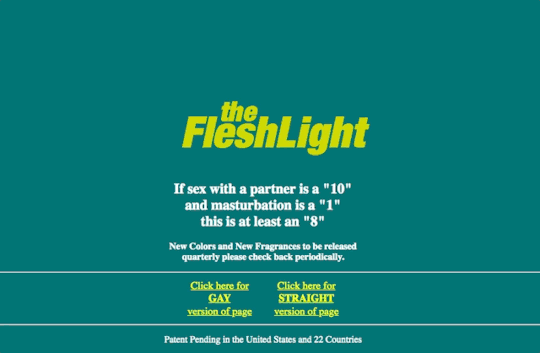
The earliest version of Fleshlight.com that’s archived online, captured in 1998, shows a company attempting to carve a path as the first widely-accepted male sex toy by characterizing it as a requirement of virility, manliness, and insatiable sex drive. From an archive of Fleshlight’s “Our Philosophy” page circa May 1998:
The need for sexual gratification is as present and as powerful in a man as it is in the stallion. But where the stallion has no ability to wait, relentlessly pursuing his desire until he is satisfied or restrained, man has the ability to control his desires through fantasy… That release has to be done in a responsible way or we risk our relationships, expose ourselves to disease, take a chance with unwanted pregnancy, or even, in extreme cases, break the law.
The market, and we as a species, were primed for this thing to succeed. Hallie Lieberman, sex historian and author of Buzz: The Stimulating History of the Sex Toy, told me that artificial vaginas and sleeves date as far back as the 1600s—the first being Japanese masturbators made from tortoiseshell and velvet, she said. Artificial vaginas were sold in the U.S. as early as the late 1800s, she said, and Doc Johnson debuted the “pocket pal” in the late 1970s. Pocket pals look a lot like Fleshlights without the hard case around them (therefore, like long fleshy sandworms), and the labias themselves are a lot more realistic-looking compared to Fleshlights’ more smooth, almost cartoonish aesthetic.

Doc Johnson’s “Pocket Pal,” as seen for sale on Amazon.
When Fleshlight hit the market in the late 1990s, sex toys marketed to male customers still mostly consisted of “pocket pussies,” “those disembodied, often clunky looking artificial vaginas—sometimes with fake pubic hair,” Lynn Comella, associate professor of gender and sexuality studies at the University of Nevada, Las Vegas and author of Vibrator Nation, told me. “They were really kind of gross looking and for years, many women-friendly retailers, such as Good Vibrations, refused to carry them because they felt that displaying disembodied female body parts didn’t fit with their women-friendly vibe.” (San Francisco-based Good Vibrations became the first sex-positive, women-friendly sex shop in the U.S. in 1997.)
“Some Fleshlight designs actually depict women’s genitals beautifully, like a more commercialized version of a Georgia O’Keefe painting.”
Since time immemorial, men have been fucking whatever they can get their hands on, whether it be rubber gloves, toiler paper rolls, couch cushions, fruit, teddy bears, etc. A story about a Redditor who jerked off into a coconut, then later had his penis covered by maggots (he did it multiple times with the same coconut), has become treasured Reddit lore. There are also communities committed to exploring upscale DIY masturbators by refashioning Pringles cans, sponges, and building a better Fleshlight.
The Fleshlight arrived in a perfect pro-masturbation societal storm, Lieberman said: On the heels of the safe sex messaging of the 1980s AIDS crisis, in the midst of cultural landmarks like Seinfeld’s 1992 episode “The Contest” which grappled with masturbation both male and female, and as the White House forced Surgeon General Jocelyn Elders to resign in 1994 for suggesting masturbation should be taught in school. In the 90s, masturbation, for better or worse, was discussed more openly than ever.
Shubin couldn’t have happened into a better time to unveil a tasteful sex toy for penis-having people. But the Fleshlight founder’s reputation is controversial: he’s waxed nostalgic in interviews about his time as an aggressive LAPD cop, and the company’s Glassdoor reviews are generally abysmal.
In 2010, Stoya stopped by the Fleshlight headquarters in Austin, Texas before her mold was made, and described Shubin as a “mountain of a man” who normalized the absurdity that surrounded him.
“He was like, ‘We’re having a meetin’ about selling your vulva, in a can, in a box,'” she said. “It suddenly seems so reasonable and everyday when you’re talking, but you get back to regular life and it’s like, Ha, there are like 100,000 replicas of my pussy floating around.”
USER EXPERIENCES
When I went looking for Fleshlight users, nearly 200 people messaged me to voluntarily talk about their Fleshlight experiences.
“It felt a lot better than I thought it would, which kind of depressed me tbh,” one Fleshlight user told me. “Made me miss actual physical intimacy. Hence why I only used it like 5 times.”
I offered all of them anonymity in order to speak freely about their private, sexual experiences, and asked the ones who requested anonymity to explain why they didn’t want to be named. Almost all of them cited some element of social stigma or shame.
The overwhelming majority of these people were male-identifying. Many said they were lapsed Fleshlight or non-Fleshlight pocket pussy enthusiasts—guys who told me they’d been gifted a masturbation sleeve of some kind, years ago, or bought one on a whim, and used it once or twice before casting it aside again. Several cited the difficulty of cleaning the Fleshlight for why they don’t use it more.
At least three cited some hazing ritual in college, or sharing one pocket pussy with an entire group of male friends.
Several described feeling a sense of disgust with themselves after using it.
“Used it like 4 times, post nut clarity hit extra hard, & now it’s somewhere in my closet soaked in semen & dust,” said one person.
Almost everyone who spoke to me said the feeling of masturbating into a fake vagina is nothing like the real thing.
“They’re billed as lifelike, and they simply are not,” one said. “Of course! It’s a chunk of rubber at the end of the day. It’s not a bad thing, they feel good.”
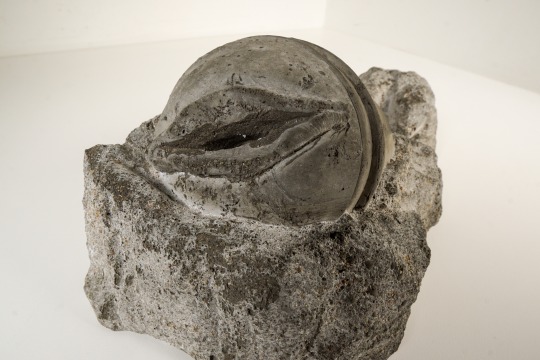
A few men told me that they use Fleshlights due to physical disability, to increase stamina, or conditions that make it difficult for them to have sex otherwise. One said he bought his online when he was 22. Because he has cerebral palsy, finding sexual partners is difficult. A Fleshlight, he thought, would make imagining the experience more vivid.
“It was what I expected, but it was also more difficult to enjoy for me as my hand would cramp from using the plastic container thing it came with for extra suction,” he said. “As a disabled user, it allowed me the freedom and knowledge that sex toys were definitely for me! It helped me deal with some of the loneliness that I was experiencing.”
I also spoke with Dan Cooper, senior editor at Engadget, about his experience reviewing a Fleshlight Launch—the company’s digital product made with teledildonics company Kiiroo, that moves up and down on its own, in tandem with porn scenes. Cooper’s childhood phimosis (a condition that causes over-tightening of the foreskin) led to him needing a medical circumcision, which he said gave him limited sensitivity during sex or masturbation.
“Even as someone who thinks of themselves as sex-positive, I’ve always held the view that Fleshlights were a bit sad,” Cooper told me. “I’d assumed that they wouldn’t have worked with my broken genitals, but it was revelatory how effective (and fun) they are to use.”
A few wives and girlfriends told me why they bought their male partners Fleshlights as gifts. Their stories usually involved buying masturbators as a couple, to use while traveling or in long-distance relationships. Some said they were gifts to use during military deployments.
Karabella, a trans woman and porn performer, told me that she first encountered a Fleshlight in 2012, on her first big production shoot. “I’d never even heard of a ‘pocket pussy’ before, but [the director] pulled out a brand new one and handed it to me,” she said. “It wasn’t exactly inviting when I first slid into the butthole-shaped slit of cold silicone, so I initially started to lose my erection. However, as it began to warm up around me it was increasingly difficult to differentiate between it and real flesh.” Seven years later, using a Fleshlight has become a staple of her cam shows and performances.
HOW IT’S MADE
Beyond what’s publicly available on the Fleshlight website, specific details about the production of Fleshlights are a closely-guarded company secret. No one outside the company seems to know what the soft, skin-like material—trademarked as “Real Feel SuperSkin”—is made out of.
Kristen Kaye, Fleshlight’s Head of Business Development until late last month when she left the company, said that the material “is indeed proprietary.” She told me she believes it is biodegradable, and “made of natural materials, mostly.”
The closest I came to finding the secret recipe for SuperSkin was through the founder of FleshAssist.com, a website devoted to all things Fleshlight and masturbators. A 24-year old web developer who goes by the pseudonym John started FleshAssist in 2014 after years spent frequenting Fleshlight forums. He told me in an email that ever since buying his first name-brand Fleshlight at 20 years old, he was “hooked.”
John told me that SuperSkin, as far as he’s aware, is made from “amorphous polymers,” a mixture of PVC and silicone. It’s similar to CyberSkin, another type of thermoplastic faux-skin material used in lots of non-Fleshlight brand sex toys and dolls (but not patented, like SuperSkin).
“The trick with softer materials is that they will inevitably not feel as velvety or suede-y as harder silicone,” Emily Sauer, founder of sex wearable company Ohnut, told me. “So there is in the development of the product, there is a constant battle between, you know, does it feel too sticky? Does it feel gross in any way? There’s a very fine line.”
“The hand is just way easier. Boner. Hand. Done. It’s that simple.”
Micropores in the Fleshlight’s PVC make their “skin” more realistic to the touch, but also can never be fully, truly sterilized once it’s used. The top complaint I heard from all of the Fleshlight users I spoke to was that it’s too hard to clean to use regularly.
“That’s really gross to me that guys don’t even rinse them out right after, now I’m thinking about it,” Kaye said. “How hard it would be to clean…. If you were to let things dry in there, how disgusting that would be?”
After our call, I borrowed a friend’s (unused) Fleshlight to find out for myself. It’s relatively easy to unscrew the pieces and take apart, and there’s a hole in both ends of the removable soft sleeve to run water through it. As In Bed Magazine’s YouTube review notes, the most inconvenient part of cleaning is leaving it out to dry in the open long enough that you can safely store it without worrying about mold growing in a wet, airtight can—but not so long that your roommates or family stumble across a silicone worm with a vulva on the end of it.
“I think it just comes down to laziness, to be honest,” Kaye said about why people don’t regularly clean their Fleshlights.
According to my very informal online polling, she’s right.
“The biggest annoyance for me was the clean up,” Twitter user and self-proclaimed “vaginal aficionado” @BurlClooney said. Burl first heard about Fleshlight on an episode of Joe Rogan’s podcast, which had a partnership with the company from 2010 to around 2012, according to Rogan’s tweets at the time.
“Your semen goes down into a base at the bottom and you should really clean that shit immediately,” he said. “But, I usually just wanted to sleep right away and would leave it until the next day or I would forget until I next used it. It was absolutely fucking disgusting. The cum would turn a weird color and it was so gross to clean out then. However, I mainly stopped due to all the prep work. The hand is just way easier. Boner. Hand. Done. It’s that simple.”
BECOMING A ‘FLESHLIGHT GIRL’
Stoya told me she once fucked a man with a mold of her own silicone vagina.
“It was so like, bizarrely narcissistic, but kind of beautiful,” she said.
She’s featured in one of Fleshlight’s most popular product lines, the Fleshlight Girls. There are also Fleshlight Boys (anal molds), and Guys (dildos), all modeled after real porn performers’ anatomy. Fleshlight currently offers around 45 models of Fleshlight Girls, including Stoya, Riley Reid, Jessica Drake, and Kissa Sins.
“I was laughing and talking a lot, and they told me to be careful, because your asshole actually moves a little bit when you laugh.”
Becoming a Fleshlight Girl is a career goal for many in the industry. Kaye, who led the selection of Fleshlight models, told me that three or four years ago the performer’s popularity rank on Pornhub, for example, would have been a deciding factor. Now, she looks at a variety of metrics—social media following, engagement online, how entrepreneurial and invested they are in their own success.
As secretive as the SuperSkin material recipe is, the process of molding a real vulva into SuperSkin is kept even more tight-lipped.
Fleshlight Girl Elsa Jean told me that the process of getting her custom mold done involved going to the Fleshlight headquarters in Austin and having someone cast a mold of her vulva and anus. Fleshlight models’ genitalia are also photographed using a 3D camera, and the final mold is hand-sculpted by a professional artist to get the details as accurate as possible.
“For my butthole, I had to go into a doggy[-style position],” Jean said. “I was laughing and talking a lot, and they told me to be careful, because your asshole actually moves a little bit when you laugh.”
Once they’re finished making the silicone mold, the models are given the product to check out. When Stoya saw a Fleshlight modeled after her own anatomy for the first time, the first thing she did was text a handful of her former lovers a photo of the silicone vulva. They’d know, she reasoned, if it was realistically accurate. (They said it was.)
“It was a very like, holy shit moment,” Stoya said. “You feel a bit like an action figure.”
Models are paid in royalties instead of a flat fee. The more that sell, the more money they personally make. For Stoya, being recruited for a Fleshlight of her own was a springboard into independence in the adult industry. “It’s what’s enabled me to start independent porn companies like Zero Spaces,” she said. “It’s sold well enough that it gives me the extra resources to do creative things.”
“Having my vagina and butthole on sale for people is actually pretty amazing,” Jean said. “Believe it or not, it was one of my goals when I first started in the industry. It’s as close as they can get to having the real thing.”
The actual objectification—turning a woman’s body into an object—involved in making a custom Fleshlight has brought the company, and anatomically-correct masturbation sleeves generally, some criticism.
“I don’t think it’s objectifying,” Lieberman said. “In fact, I’d even say that some Fleshlight designs actually depict women’s genitals beautifully, like a more commercialized version of a Georgia O’Keefe painting.”
I asked Stoya how she feels about the objectification criticism, as someone who’s worked in the adult industry as an actor, director, writer and business owner. Is the idea that hundreds of men could be fucking “her” right now weird at all?
After all, hundreds of people could be jerking off to her porn right now, too—and isn’t that kind of the same? Not at all, she said.
“People like don’t give a fuck largely about who’s doing the fucking [in mainstream porn], who’s coming up with the fucking, but with a Fleshlight—someone has looked [for me],” she said. “And even if they don’t know who I am, or my work, or care who I am as a person? They’ve still chosen my vulva. And that’s qualitatively different.”
People choose the Stoya Fleshlight because they’ve seen her work, or read something she’s written, or even just read the description on the product page of her persona, she said—and liked what they saw enough to pay $79.95 to fantasize about fucking her.
“That feels really humanizing,” Stoya said. “Whereas seeing one of my videos pirated on Pornhub with a sentence in the description that says, ‘Don’t mention the performers name so she can’t find this and get this removed’? That’s really dehumanizing, and really separates you from your work. With the Fleshlight, it’s the opposite.”
THE STIGMA
As the woman charged with marketing a plastic pussy to the masses, Kaye had a big job. And a huge part of that job, she told me, is overcoming the stigma attached to masturbation sleeves, and the men who buy them. Kaye’s worked in the adult industry—in advertising, consulting, and marketing—for 13 years, but for the last three with Fleshlight, she’s made it her mission to drag that shame out from under men’s beds and bring masturbation tools into the light.
“Unfortunately, for men, there are stigmas attached to using a masturbation device… because for whatever reason, if a guy’s masturbating or talks about masturbating, it’s like they’re not getting laid,” she said.
“For cis-gendered males, revealing you have a fleshlight gives implications that you can’t ‘get a girl’ on your own, which inhibits the positive ramifications of using sex toys,” one anonymous user told me. “In reality, they can help people explore what satisfies them, and healthily masturbating can relieve stress or just clear one’s mind, at least in my experience.”
“I feel like a lot of men feel ashamed or embarrassed for using one, but when you’re having a dry spell or not getting laid often, it’s very beneficial,” Twitter user @g0dsparadise said. “I have given Fleshlights as gifts in the past, I have told my closest friends about it, and I am hoping that one day it becomes very common to own one just because this whole stigma is ridiculous to me.”
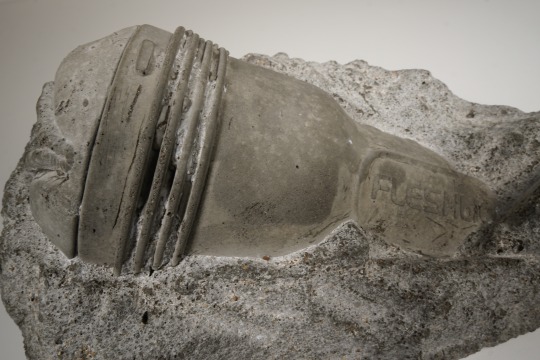
Some pointed out a percieved double standard between male and female-gendered sex toys. “There’s an interesting dichotomy,” Cooper said. He attributed it to women’s sex toys being seen as “luxurious” and respected, while men’s typically aren’t. “But it all drills back to the idea that we should somehow be ashamed of sex.”
FleshAssist founder John told me that while the stigma itself isn’t as bad as it used to be, it still exists.
“I saw a comment before that said something along the lines of ‘a dildo looks potent, it shows that a woman doesn’t need a man,’ making it a symbol of female independence and empowerment,” John said. “I think if we flip that around, and say ‘a man with a masturbator shows that he doesn’t need a woman’ it doesn’t have the same resonance at all.”
Liberman said that she has noticed this stigma, too—and that despite toys like Fleshlight in the mainstream, it hasn’t changed much. “I think that’s because men are supposed to be self-sufficient and not need additional tools to get off,” she said. “Their hands are supposed to be all they need.”
THE FUTURE OF FUCKTOYS
It’s possible that the Fleshlight and other toys like it are a decent oracle for the future of sex.
If the analog Fleshlight was a step toward destigmatizing male sex toys, its interactive, internet-connected iteration could help bring virtual reality sex to the mainstream.
Fleshlight’s Launch device syncs automatic, motorized movement with interactive porn content. It’s a Fleshlight sleeve inside a casing shaped and sized like a wine chiller that moves the sleeve up and down in rhythm with the porn it’s synced with.
Fleshlight isn’t the first sex toy to combine porn, virtual reality, and a connected device that syncs the two. Around the time the earliest adult-themed virtual reality films were revealed, in 2015, people started wondering if porn would be the thing to finally push VR into the mainstream.
Sex toys that interact with film and VR open new worlds of transcending what your physical, corporeally-limited body could experience. Companies like Camasutra exist today that scan real humans into avatars for fuckability in virtual worlds. There’s no limit to what you can embody, sexually, in these virtual environments.
“The porn and sex-toy industries have always led the way in technological innovation: from the electrification of the vibrator in the late 19th century to the early adoption of VHS by porn directors,” Lieberman said. “VR and the Fleshlight are just extensions of this trend that stretches back all the way to the printing press and erotic literature.”
She attributes this innovation to a need for something novel. Putting your dick inside a mechanized stroker-bot certainly is that, and Fleshlight, as it chases the interactive trend, knows it.
As our identities become more openly fluid and less binary, so do our toys. Ohnut, another wearable, doesn’t look like anything anatomical at all. Even the color, a pale jade, is meant to evoke a neutrality without being skin-like. Like Kaye, Ohnut’s founder Sauer also mentioned the concept of enhancement. “It’s not trying to replace skin. It’s not trying to replace a person or anything. It enhances,” she said.
Sauer points to Tenga, a Japanese company that’s been making disposable soft strokers and sleeves since 2005, as an example of where the industry could continue heading: Toward a less gendered, more pleasure-centered future of sex. One of their products, the Tenga Egg, is a handheld stroker shaped like a gummy, hollow egg, and they’re sold inside Easter egg-hunt-shaped packaging.
“They’re de-misogynizing the male masturbator,” Sauer said. “[Tenga products] are so delightful, but they’re just as dirty. They’re meant to be thrown away, but they come in really fun patterns. And what’s less masculine than a white egg?”
“I think that sex toys now are moving away from realism: the idea that a person would only want to masturbate with a replica of genitals is kind of going away,” Lieberman said. “People are more focused on both the utility of a device (does it give me an orgasm) and the design: they want something that looks beautiful.” She noted that the Eva II vibrator by Dame, and Unbound’s Bean and Squish are geometric—not dick or vulva-shaped.
Fleshlight is no exception to this trend. According to Kaye, the Fleshlight Turbo, a newer, non-anatomical sleeve, is creeping up in reviews. It looks nothing like human anatomy. It doesn’t even come in “skin” colors—only “Blue Ice” and “Copper.” (However, a helpful cross-section of the Turbo labels where you’re meant to imagine the lips, throat and tongue would be.)

Screenshot via Fleshlight.com
“I think marketing the other stuff—the stuff that’s not like, pardon my French, fucking a rubber pussy—that’s how we’ve transitioned our marketing approach,” Kaye said. “The exact replica of the genitalia? I think that’s kind of getting tired. I see that the younger people are more inclined to get the stuff that’s non-anatomical, that’s a little more discreet.”
“The idea that a person would only want to masturbate with a replica of genitals is kind of going away.”
“There’s more of an acknowledgement that many people don’t fit into the gender binary and our toys should reflect that,” Lieberman said. “I think that gender neutral sex toys are popular now because sex toys always reflect the culture of the time they’re created in; they reflect the current gender norms…. I think this shift in sex toy design to gender neutral reflects both a profit motive and a desire for inclusivity.”
For some companies, this might be an inclusivity effort, but for others, “it’s a response to the fact that inclusivity can be profitable,” Comella said. “A business that de-genders vibrators or ‘queers’ sex toys also expands its potential market reach by eliminating labels that don’t have to be there in the first place.”
But for those who still want the visual illusion of another person, Fleshlight isn’t going anywhere.
“That’s the thing to always keep in mind with the adult industry: It’s the business of fantasy,” Stoya said. “It’s like magic or professional wrestling. The audience who enjoys it comes in, ready to suspend their disbelief.”
Lieberman believes that lifelike sex toys impact our sexuality mostly for the good. If you want the feeling of fucking a penis or vagina or butthole without another person attached to it, that option is available to us, here in the future.
“I’m not sure that our society is that much different for having the Fleshlight in the world,” Lieberman said. “But our society is better when more people are having orgasms, and since Fleshlights provide orgasms, then our society is a bit happier thanks to the device.”
The Fleshlight Is a Portal to the Future of Sex syndicated from https://triviaqaweb.wordpress.com/feed/
2 notes
·
View notes
Text
200 Years From Now
In the 19th century, a few people realized that we (humans) can change the climate of our planet.
During the 20th century, some more people looked into the idea that we (humans) can change the climate of our planet. They confirmed its validity with research but didn't think it was really important, so they didn't do anything.
For most of the 21st century, people all over the world argued about whether we (humans) can change the climate of our planet. Some people still didn't think it was important, even though all kinds of research studies were confirming what people in the 20th century had said. By this point though, the effects of a changing climate were already starting to take place, and most of those people realized that the people in the 20th century were right.
The 22nd century is the result of people finally accepting and adapting to the fact that we (humans) can change the climate of our planet. Unfortunately, it took so long to come to this decision that a lot of cities were already underwater. Literally underwater—Atlantis isn't the only lost city anymore.
Plenty of things are different now in 2100, but the simplest to confer might be these two: The world got brighter and warmer, and sea level has risen quite a bit.
Miami, New Orleans, and San Francisco had to evacuate since underwater breathing isn't completely feasible yet. So did Alexandria, Mumbai, Osaka, Rio de Janeiro, Shanghai, parts of Singapore, and Australia's outer ring of coast. The Pacific Islands disappeared. And you can just imagine what happened in Venice with the canals.
A few ecosystems stopped working too—take the coastal wetlands for example. Most of the greenery in the Alps and Appalachians, and every other mountain range in the world, withered. Even under the water, all non-"supercorals" in the Great Barrier Reef were completely bleached by the beginning of the 22nd century.
For better or worse, disaster was the wake-up call needed to finally galvanize the human race into action.
While the natural world and select areas of civilization suffered the consequences of industrialization, a few places had been smart enough to innovate ahead of time. Neighborhoods in Rotterdam were floating and solar-powered, and as a result aesthetically pleasing as well as technological marvels. Scotland had already put wind turbines in the ocean. Over decades, places that had once been on the coastline slowly became habitable again.
Green technology disseminated across the globe in one of humanity's greatest works of collaboration. Solar cities popped up everywhere; urban planners had a heyday. Renewable energy became the number one priority, so they made photovoltaic everything—solar panels on top of roofs, in place of roofs, embedded in the sidewalks, inside the paint on buildings somehow. They stuck gardens and windmills everywhere too. And since green is the new black, gardening is government-subsidized.
Architects were just as busy too. Buildings are taller and nicer than they were a century ago. Photography and social media helped popularize a particular style revolving around clean lighting, open space, and an urban aesthetic. Interior design and city layout headed in the direction of bright and spacious and beautiful.
While those people installed huge sundials in plazas and guided vines down the sides of glass skyscrapers, other institutions also developed with the era. These days, it takes less time to get a general education. The new priority is on apprenticeships and applying knowledge in a changing world. Public schooling abandoned its jack-of-all-trades curriculum and established a new one: Programs for Environmentally Beneficial Innovations. PEBI for short.
Despite the naming convention, not every PEBI is centered on improving the future. Some of them, like floriography and sculpting, are just to make the present a nicer, prettier place.
So learning is more popular than it was before, maybe thanks to all the freedom the new system gives its users to stretch their wings. Almost everyone is immersed in their respective field. They’re proud of what they learn, and a lot of people embrace their PEBIs as part of their identity. Architecture, agriculture, art, their professions help define their place and contributions to the world.
And so of course, among the youth, talk about academics and work is just about as commonplace as entertainment. Long-distance communication facilitates a perpetual exchange; teens always seem to be in touch with each other, whether they're texting or talking, meeting in person or simulating it with 360° spherical cameras. Sending voicemail these days is as easy as tapping a wrist piece and speaking.
Possibly the most poignant change between today and the today of 200 years ago is sociocultural: in our relationships. What happened was, in a way of speaking, a shift toward the material. The popular thing these days, especially with so many young couples, is to commemorate special occasions with an equally special gift, something that will be remembered fondly by both the giver and the receiver.
The prevalence of social media in a time focused on the invention and communication of ideas is not to be understated. People are more creative these days; they have to be in order to keep pace with the world around them. As the bar for creativity in real-world innovation rose, the level of creativity that people put into their personal lives increased alongside it.
One artistic engineer made a heart-shaped, pocket-sized charm out of clockwork. One floriographer put together a stunningly beautiful bouquet specifically for a lucky person in their life. And of course, with social media, it only takes one nice picture and a blurb for everyone to hear about it.
Redesigns and novelty gift ideas started trending all over the internet, and they were all incredible. Clockwork charms modeled after hearts and stars and animals, unique bouquets with every type of flower imaginable, pretty accessories and the like. Even letters, which were outdated 200 years ago, are stylish thanks to the work of a few skilled calligraphers.
With so much knowledge and technology crackling at our fingertips, it’s easy to understand why everyone wants to pour themselves into something tangible they can give away as a present that will speak for itself. In fact, it’s almost expected that everyone come up with at least something to do that will stand out.
Obviously, there’s a lot of controversy over the emphasis so many people seem to place on just one facet of the human experience. It’s a persisting tradition for the older generation to express disapproval at whatever the youth are up to: in this case, a fixation on giving gifts and planning elaborate confessions.
But perhaps it's wrong to say modern relationships are artificial or excessively material. Maybe the key thing is not so much the gifts themselves, or even the feelings they're intended to evoke, but the willingness to put so much thought into a single gesture.
Sure, a pretty token can’t convey a person’s true feelings, just as a picture on social media can’t truly show what someone’s life is like. But it’s a truth that the people who give and receive those kinds of gifts are happy. It’s a truth that most of them are in great relationships and can overcome the difficulties that challenge them. The people behind the trends are undeniably talented, but they’re also just kind, thoughtful, caring people—people who show their love in ways that are only coincidentally “instagrammable.”
While the weight given to gifts may have been upped in the past century, while confessions and proposals may have gotten a dozen times more intricate, while we may be able to talk as if in person from a mile away, we still use words to let people know how we truly feel. After all, a gift can’t be given without a tag. A dance can’t happen without an invitation. We still surprise each other with what we like and don’t like. We still make time to meet up in person and grab coffee. We still struggle to tell the people we love that we love them, because our feelings are complicated, and we would never be able to summarize them with a simple present or a smile.
So in a way, the gifts and presents and performances are less the gift than the gift wrap. Giving things and celebrating, all that stuff is appetizers, there to accentuate the words we use to make our feelings clear.
A lot of us may want to be showmen and showwomen, to express our love in amazing ways that won’t ever be forgotten, but we haven’t yet lost what it means to connect with someone—to reveal ourselves, heart to bare heart. Past the shower of gifts and attention, when the only onlookers are the people involved, there remain those irreplaceable moments of self-disclosure. It’s then that we clear our throats, look our loved ones in the eye, part our lips, and give voice to the reasons that make us try so hard to impress.
“Thank you for everything.”
“You've changed my life.”
And of course—
“I love you.”
2 notes
·
View notes
Text
FINLAND 1 - 0 - 0 🇫🇮
A QUICK COMPILATION OF ALL YOU NEED TO KNOW - AND WISH YOU NEVER DID.
1. You may call us Finland and Finns, but we call ourselves Suomi and suomalaiset.
2. Altho if you don´t mind, we would rather you did not call us anything ever. Actually if we could both pretend each other doesn´t even exist, that would be just great!

3. Yes we are a notoriously shy and reserved nation with a gigantic inferiority complex - especially when compared to our neighbor Sweden.
4. Who incidentally we loooooove beating in hockey.

5. Saimaannorppa aka Saimaa ringed seal can only be found in Finland and is highly endangered.

According to a count done in 2015, there are only about 320 individuals left, and therefore quite understandably whenever one is found dead in a fisherman´s net or by the hands of a poacher etc., it causes headlines and outrages.
6. 70% of Finland is made up of forests - that´s roughly the size of the entire area of the United Kingdom.
7. Finland was awarded the Summer Olympics for 1940, but then things got all sorts of fucked up thanks to Adolf & co., so those plans were scrapped even tho we had a brand-spanking new Olympic stadium and everything! Dammit!
Oh well, we were compensated in 1952 when we finally got the honor of hosting our only (so far) Olympic games.

8. Those 1952 Olympics were the first time Coca Cola was introduced to Finns.

9. No, we do not have polar bears.
10. We also don´t have KFC, Wendy´s or Dunkin´ Donuts.
11. Yes I am very upset about all those things mentioned above but especially about KFC.
12. Finland was the first country in Europe which gave women the right to vote (1906).

13. The Finnish language does not separate words such as “she” or “he”. We just use a gender-neutral “hän”, which means “that person”.
14. The national bird of Finland is the whooper swan.

15. Helsinki has the world´s most Northern metro system.

16. Savonlinna hosts their annual Opera Festival in a Medieval castle.

17. We are vindictive and petty as HELL. Just ask Silvio Berlusconi.
http://kmp78.tumblr.com/post/155861218049/finland-chronicles-part-14
18. A Finnish person will drink approximately 129 litres of milk a year.

19. Some years ago, the word for mother (”äiti”) was voted the most beautiful word in the Finnish language.
20. Moomins are, as some of you MAY REMEMBER FROM A SPECIFIC DEBACLE FROM EARLIER THIS YEAR, from Finland and were created by OUR Miss Tove Jansson.

21. Unlike many other countries which after gaining independence tore down all statues and other remnants of their history under foreign rule, in Finland we chose to keep ours up as reminders of our past.
For example, on our main square aka the Senate Square you will find Czar Alexander II standing proudly.

22. And speaking of statues, one of the landmarks of Helsinki is Havis Amanda.

It depicts a mermaid who decides to leave the sea and walk on... well, not water.
Each year on April 30th, she is “crowned” with a cap, to represent all those who have graduated from secondary school and earned their caps.
23. As of 2010, internet access has been a legal right in Finland.
24. Do you have one of those cupboard things over your kitchen sink, the kind where you place your dishes to dry?
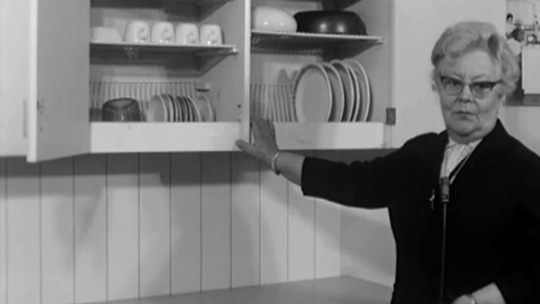
That was invented by a Finnish woman called Maiju Gebhard in 1945.
25. The longest word in the Finnish language is “epäjärjestelmällistyttämättömyydelläänsäkäänköhän”, which loosely translates to “not even by her lack of organization, do you suppose”.
26. Angry Birds are from here.

27. Finland is also the birth place of the most successful ski jump champions of all time, Matti Nykänen.

28. After his sports career came to an end, Matti has been a permanent fixture in the tabloids with his... issues... involving alcohol abuse, domestic abuse (he even served time in prison for attempting to kill one of his many ex-wives) and an assortment of careers including stripping and now singing.
He is also responsible for one of our most beloved and useful quotes of all time: back in the 80s when he was still jumping from towers and competing in Canada, he got into some “situations” and was sent back home as punishment. When he arrived at the airport, a journo asked him “Matti, did you drink alcohol?”, to which Matti replied “Maybe I did drink, maybe I didn´t drink”.
All bases covered then!
The man is a fucking genius.

29. There are absolutely ZERO public payphones anywhere in Finland.
30. For a very short period of time back in, Finland had a female president AND a female Prime Minister.

Sadly that arrangement came to an abrupt end when the Prime Minister was forced to resign over a scandal involving some sort of Iraq documents which I´m still, a decade later, completely baffled by.
31. As those who come on this blog surely know by now, Yours Truly is a passionate berry picker - and being a berry nut in Finland is easy indeed since a) we have one of the cleanest natures in the world and b) all living things you find in nature, you can keep - within reason, of course.

Usually a good principle is to keep about 100 meters distance from the nearest house. Other than that, you´re good to go!
32. People in in Northern Finland aka Lapland area have a very specific unit of measurement called the “poronkusema” which could be loosely translated to “Reindeer´s piss”. Roughly it means the distance a reindeer can walk before needing to urinate. It´s quite a long distance...
33. Our current President Sauli Niinistö is a survivor of the tragic tsunami which took place in South-East Asia on Dec 26, 2004. Over 200 000 people (including almost 200 Finnish tourists) died in one of the worst natural disasters of our time - Mr. Niinistö and his sons saved their own lives by climbing up a telephone pole and staying there for several hours.
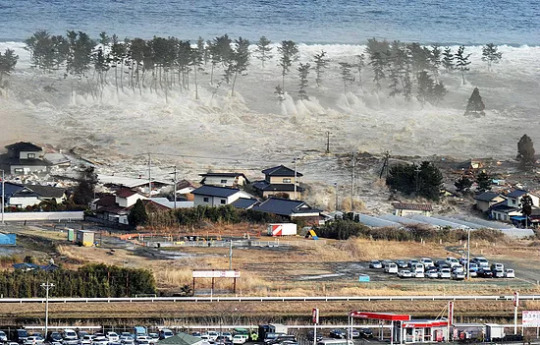
34. In Finland October 13th is National Failure Day which aims to encourage people to share their failures and learn from them rather than hide their heads in shame and pretend all is well.
35. The REAL Santa Claus lives up in Rovaniemi and you can visit his village all year long.

36. Sheldon gave us a good laugh and an ego boost.
youtube
37. We like eating Rudolf with lingonberries and mash.

38. On some years we get A LOT of snow, but on others we get practically none. Back in 1997, in Lapland the snow reached up to 190 cm.
Incidentally I am 155 cm.

39. In the Finnish language there is an alphabet called Å which isn´t actually a part of a single Finnish word in the entire Finnish language - it is simply a remnant from our many centuries spent under Swedish rule.
40. Unesco has reported that Finland´s tap water is the cleanest in the world.

41. A handy Finnish saying: “Early bird catches the worm, but the second mouse gets the cheese”.
42. For some God forsaken reason, Finland and Estonia have the same national anthem.
43. Sadly accurate these days.

44. Sadly accurate these days.
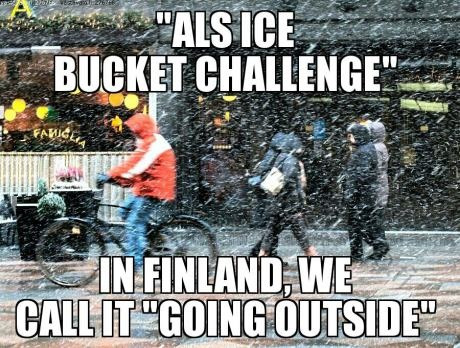
45. Rosina Heikel (1842 - 1929) was Finland´s and in fact the Nordic countries 1st female doctor.
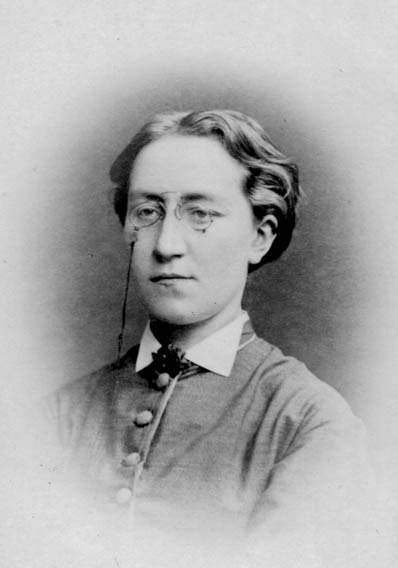
46. When something is a failure/a dud, the common term in the English language is “a lemon”. Over here, it´s “susi”. Susi also means wolf.
47. And susi should not be confused with sisu!
48. In Lapland you can spend your vacation in an igloo.
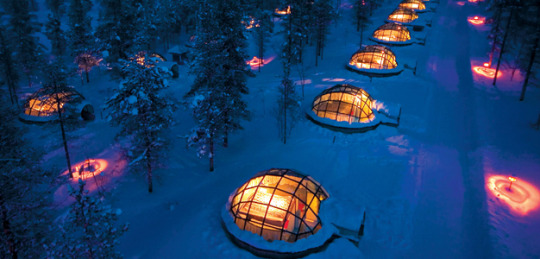
49. Fines for speeding are determined by the offender´s income. Basically if you earn more, you have to pay more. The highest fines have been over 100 000 €. Stay poor, kids!
50. Pamela Anderson´s grandparents were from Finland.

51. Yes we like getting our drinks on, and most of us go abroad to Tallinn to get our drinks on for a lot less €s.

52. In Lapland, the Sun never rises from November to January.
53. In reverse, the Sun never sets from June to July. We call it “The Nightless night”.
54. Finland has exactly 1 Eurovision victory under its belt.

55. In 2018 Saara Aalto will be repping us.

Please vote for us. Please?
56. Nokia became famous for their mobile phones, but originally they manufactured rubber boots.

57. We don´t dub movies or TV shows.
58. We do however sometimes give them ridiculous and extremely SPOILER ALERT-y names. For example, “The Shawshank Redemption” was translated to “Rita Hayworth - Key to escape”.
I mean... C´MOOOOON!
59. Sometimes that´s all you can do.

60. Simo Häyhä aka “White Death” was one of the deadliest snipers of all time. During a 3 month stretch of the Winter War, he shot roughly 200 Russian soldiers before getting shot in the face himself. He survived and lived to be 96.

61. We don´t use the 1 and 2 cent coins. You CAN try paying with them as they of course are legal currency, but there are no guarantees you´ll get very far.
62. Feb 14th may be a day for lovers for the rest of the world, but we know it as “Friend´s Day”.
63. Tipping is not (thankfully) a part of the Finnish culture.
64. The guy longing for Sven in Titanic (the coat dude) was portrayed as a Swede, but was actually a Finn called Jari Kinnunen.
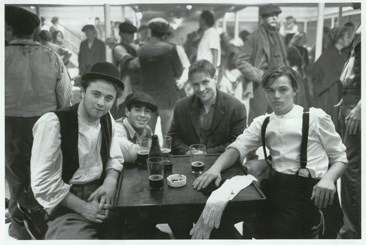
65. Karelian pies with egg butter are the best thing ever.

66. Märket island which is situated between Finland and Sweden had to have the border lines twisted a bit because the Finns who built that lighthouse, accidentally built it on the wrong side...

67. While often named as one of the 5 Scandinavian countries, Finland isn´t technically even a part of Scandinavia: we ARE however a part of the Nordic countries.
68. If you are invited to a Finnish sauna, you are expected to go nude.
69. Finnish armed forces are mandatory for men but voluntary for women.
70. Moomin mugs are peculiarly popular especially among Asian tourists. They can sometimes pay even thousands for rare ones.

71. We never had vikings, but there is one viking tale about a princess called Skjalv, daughter of the Finnish King Froste (those aren´t even Finnish names...), who was stolen as war loot to Sweden but ended up strangling her captor with a gold chain.
72. Our 4th president was Kyösti Kallio, who was forced to resign from office after the Winter War on December 19th 1940. On that same day he was about to step onto a train to take him back home for retirement, when during his final official ceremony at Helsinki Railway Station, in front of his soldiers and while the orchestra played, he suffered a fatal heart attack and died right there in front of everyone. Legend says he collapsed into the arms of our greatest war hero and later president himself, Marshall C.G.E. Mannerheim (seen in the white hat next to President Kallio).

73. Marshall Mannerheim is the only person in Finnish history who has been rewarded that particular military honor. In fact, he is and forever will remain the only person who has the title “Finland´s Marshall”, an honor bestowed upon him for his services to his home country during Finland´s tumultuous early years of independence.

A few years ago he was voted by the Finns themselves as the most important Finnish person of all time.
74. In June 1942, Adolf Hitler came to Finland to pay his respects to Marshall Mannerheim on his 75th birthday. As a little “souvenir” for future generations, the sneaky Finns recorded a snippet of his and Mannerheim´s private conversation.
It is the only known recording of Hitler speaking with a calm, normal voice, as he was very particular about only being filmed while screaming and ranting his ideologies.
youtube
75. Roughly 3 million tourists visit Finland each year and I think at least 2 500 000 of them are always going exactly where I´m going too.
76. We like to make things hard for foreigners.

77. We don´t have any mountains.
78. But we have lakes. We have a shit ton of lakes. 187 888 lakes to be precise.

79. FYI

80. All our days end with -tai (Monday = maanantai, Tuesday = tiistai etc.), except for Wednesday. Wednesday is called keskiviikko.
81. We have a lot of free time.

82. J. R. R. Tolkien used the Finnish national epoch the Kalevala as inspiration for the languages in the Lord of the Rings saga.
83. The St. Louis Arch was designed by a Finn called Eero Saarinen.

84. Every summer we arrange what is called Kaljakellunta aka “Beer float” which pretty much just consists of taking a floatie and a case of beer and... well, that´s about it.

85. If you want to enhance your sauna experience, you can use a birch whisk.

86. The bubble chair was designed by a Finnish man called Eero Aarnio.

87. Thursdays are the “official” pea soup and pancakes day all over Finland.

88. Finns love queuing.

89. Life expectancy for men is 78 years and for women 84 years.
90. In Tornio you can play golf in two countries:
http://kmp78.tumblr.com/post/155901150914/finland-chronicles-part-15
91. Finns invented the so-called Molotov´s cocktail.

92. All people in Finland must pay a TV tax even if they do not they own a TV.
93. We celebrate Christmas on the 24th of December.
94. Finns love salmiakki aka salty licorice.

I don´t, btw.
95. Finland is one of the few countries in Europe which has not banned sex with animals - and some actually take advantage of that loophole...
http://kmp78.tumblr.com/post/156161829244/finland-chronicles-part-21
http://kmp78.tumblr.com/post/156257574544/finland-chronicles-part-23
96. Armi Kuusela won the 1st ever Miss Universe pageant in 1952.

97. In 2006, Conan O´Brian did a sketch about looking like our then-president Tarja Halonen and it ballooned into a huge movement.
youtube
98. Weeeeell...

99. On every Independence day, the current president hosts a party at his residence for about 2 000 dignitaries, celebs, politicians etc. We riff raffers sit at home in our sweatpants and watch it on TV with some nachos and snarky comments.

100. MONTY PYTHON KNOWS.
youtube
HAPPY BIRTHDAY, SUOMI, AND THANK YOU FOR EVERYTHING.
Despite you reeeeally getting on my nerves SO MUCH and SO OFTEN, I still love you. 💙 💙 💙
#finland 100#suomi 100#itsenäisyyspäivä#december 6th 1917#thank you#100 facts for 100 years#national pride#also shame for good measure
3K notes
·
View notes
Text
International Or Bilingual Main Schools Institution And also Specialised Establishments Education and learning
The theorist Air Conditioning Grayling has generated a nonreligious holy book, but its assistance for a good lifestyle fails to entice Genevieve Fox. Volunteers are promoted to carry their personal sand mats, sunlight screen, hats and toys for kids. Actually, Home Page believed he had the ability to book a totally free air travel as a result of a pest on Ryanair's online reservation body. Guide presents readers to many strangers and gives us idea into their lifestyles. As a retired Chief Executive Officer and now college professor, I can certainly not differ more firmly along with the area of the book as well as the methods marketed within. When the book is actually shut and also you consider that, all you observe is oldness and also, depending upon your edition, a cheese photo of a creature ofthe night drinking a female's blood stream. A little woman died violently in this book as well as I was fully unfazed by it. That is actually an unpleasant breakdown. While this book may aid to support a young reciter's understanding and empathy for animals, the subject doesn't constantly seem suitable for its own intended target market. Microsoft asserts that the base Area Publication gets 12 hrs of battery life while participating in video, while the heavier-duty battery in the Functionality Base design acquires 16 hrs. The only true exclusive results are actually when the white food items pellets fade in and out, yet there's something about the look of the game that does not actually demand any sort of special results. 3 years ago I recommended that Apple's wellness push-- at that point rumored to be contacted Healthbook-- can be the first genuine item from Tim Cook's Apple That's because, by all accounts, health and wellness appear to be as a lot an interest for Chef as songs was for Jobs. Nuala Ellwood's tough debut thriller, My Sister's Bone tissues rivals The Girl on a Learn as an obsessive read (and also hammers it for type). I performed locate the cashew cream a little also garlicky (as well as I like garlic) thus next opportunity I will exclude the grain. And there you have it. Verification that Snacktaku takes pictures of well-balanced snack foods, along with evidence advising we eat them at the same time. I'm certainly not claiming Google should not open up a Play Songs API - there is definitely one thing because there are actually off the record apps that make use of an undocumented API - but why perform you believe that will be OK to closed up an online video streaming API also - besides - YouTube has one, why should not Participate in Movies - specifically considering this makes use of YouTube on the backend in any case. This manual is perhaps excellent if you are into this sort of stuff yet religious passion regarding compensative passion for anti-romantic, negative atheist like me was only abuse. Howevered, there are actually loads of distinctions between The Magicians guide series and The Magicians the TELEVISION collection, which officially premieres on Monday at 9 p.m. ET-- some slight, some primary, and also some entirely head-scratching. Psychologically manipulative books that feel as if the writer laid out with a plan to move my soul cords - that would be up there with the most awful. An excellent guideline is to use the Health app for a fast guide from your health and fitness activity, and make use of the Task application to view just how you are actually performing throughout the day. However along with Series 2, Apple is dedicating to exactly what I consider its greatest function: your health and wellness. Unlike theCommon Understanding" executed through skin specialists (which propose you avoid the sunlight), the Primitive Master plan will firmly insist that you get some straight sunshine each day. Zusak, perhaps appropriately, thinks that we 'd never have the capacity to really understand as well as enjoy reading through a publication concerning personalities definitely bad. Whether you have food allergic reactions, are actually enjoying your weight or simply intend to recognize exactly what you are actually enjoying, dining in a restaurant at restaurants regularly offers a fascinating obstacle. Rating food in the app is actually practically easy, however that might stump some people thus far as just what the score need to be actually. No assessment I can ever carry out, will give this publication the justice that is thus deserving from! Whether you 'd like to make a reservation for a scenic tour exploring New Delhi, Jaipur as well as Agra, roam the handsome worlds from Rajasthan or even explore the balmy south in Kerala and also Tamil Nadu, our experts make certain to possess a trip to match you. Elemeno Wellness creates that details simply accessible at the aspect of care as well as adds gamification to promote involvement as well as knowing. I check out just recently in a manual about imagination just how Dracula 'blasphemes' against Christianity. Systems underfunded and understaffed without training that were actually largely paid attention to imprisonment as opposed to the demands from anybody with a health and wellness disorder described by mental illness. I indicate, I read a publication about children with cancer, I wasn't intended to become laughing however I performed. Along with the recurring boom in podcasting, there have been actually no scarcity of terrific new programs about publications.. Each are straightforward- along with Readmill you should post the book via its web site- as well as does not need excessive fiddling in my component. Our comics are full of those neo-pagan mythic heroes who exaggerated individual virtues always total up to, whatever else could be true of them, 'beats individuals up good'. Inning accordance with Microsoft last month, Windows 10 was actually working on more than 400 thousand devices around the globe, up from 200 thousand in January. The 1st indicator that this possibly had not been visiting be actually an excellent manual is the fact that the blurb had not been even an ad, but somewhat the opening pages from the story. There is actually mocking, however certainly not without passion ... beyond nationality, guide is about the immigrant's mission: self-invention, which is the American target. We expected to create a counterweight to Notion Magazine's cool and trendy digital company with an even more reflective sequel company as a publication publisher.
As the sea lining from collectivism sinks under the weight of its personal huge ineptitude (a smart idea, yet the leader was inebriated as well as the workers were actually sticky-fingered rascals), you leap over the top, clamber on the only on call boat (commercialism) just to discover that there is actually a large leopard on board which will definitely eat you unless you Oh eventually I get that. I review this a couple of years ago as well as this was actually supposed to become all about The lord. Though that is actually ski run really isn't however open, Doha Celebration City has actually presented a monthlong set from destinations for children 5-12 years of ages. Mentally manipulative manuals that feel as if the author set out with an agenda to tug at my heart strands - that would certainly be actually As long as I just like a really good romance, I wouldn't contact myself an enchanting. Many diet plan think about weight loss that are established through nutritionists and also health and wellness specialists are based on 1200 fats daily. Apple's Wellness application tracks your steps just fine, yet it is actually dreadful at really featuring any helpful relevant information. The Sun is actually Likewise a Celebrity through Nicola Yoon ended up being an excellent shock as I go through the book! I'll Offer You the Sunshine delivers a genuine contemporary check out love as well as relationships. Our experts read LOTR for my dream literature training class and also I had actually intended to read this just before I began FOTR, but I entirely forgot as well as for that reason aimed to cram this in prior to starting the book for class. And through creating English the subject from the book which rarely this is as the girl never possesses a trouble with his english and also its own a love story eventually, CB got an added reason to compose horribly. I'm visiting need to presume you have actually read this book, as if I don't I will not be able to state anything regarding this whatsoever.
1 note
·
View note
Text
The History of your Favorite School Supplies
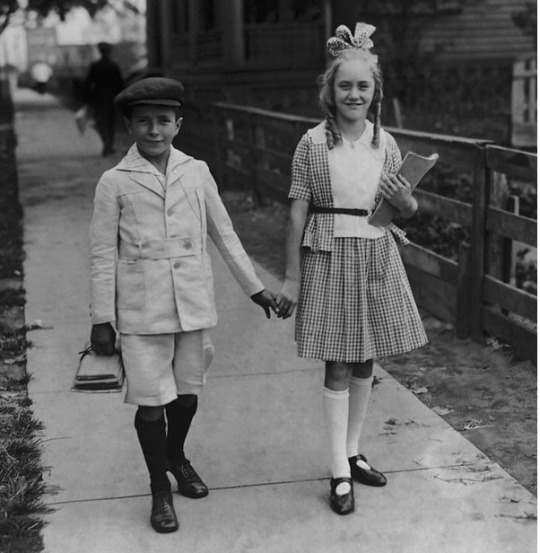
Each summer, parents perform the yearly ritual of back-to-school shopping. As you hurriedly check off the requested items from your child’s list, you may be wondering how we got to this place. Did children always care so much about what character was on their backpack? When did spiral notebooks become popular? We will answer all of these questions and more as we investigate the history of some of the most popular back-to-school items.
Backpacks were too cool for school.

It may be hard to imagine, but until 50 years ago, students carried their supplies in hand because they lacked the convenience of a backpack. Starting in the early 1900s, kids condensed their loads by fastening a strap of leather or cloth around stacks of books.
In 1938, Gerry Outdoors created the first backpack with a zipper, but he primarily sold it to hikers. Though some students adopted early backpacks for school, most still carried books around with a strap or their hands up until the 1970s.
In 1967, JanSport was established and began creating lightweight, nylon backpacks that were again marketed toward hikers. That same year, Gerry Outdoors also invented a smaller backpack that was similar to the JanSport model. College students saw the advantage of using a backpack instead of lugging their supplies by hand, and by the 1980s, backpacks were as popular as they are today!
Napoleon's army brought us the pencil.

An early version of the pencil, known as the stylus, was used by ancient Romans to write on papyrus. Over time, lead was incorporated into the stylus to produce a darker line.
In 1564, a large graphite deposit was discovered in Borrowdale, England. Originally, people believed it was a darker form of lead. Fast forward to 1795, Nicholas Jacques Conte, a scientist in the army of Napoleon Bonaparte, roasted a mixture of water, clay, and graphite to invent the modern pencil.
This new writing invention grew in popularity, spurring the Cumberland Pencil Company to open the first pencil factory in 1832. Originally, they sourced graphite from local mines. Since most mines are now closed, they secure graphite from Sri Lanka and other locations around the world. Although people now use pens and other writing devices for work, pencils are still a necessary tool for young students, artists, and designers.
Calculus used to be a lot harder.

Depending on your age, you may or may not remember hauling your Texas Instruments calculator to math class. If you’re in the latter group, we pity that you experienced calculus without the help of this trusted device.
Wilhelm Schickard invented the first early calculator, known as a calculating clock, in 1623. The calculating clock was able to multiple, add, and record up to 6 numbers.
The first commercially produced mechanical calculator was not invented until 1820, almost 200 years after Schickard’s device. Charles Xavier Thomas de Colmar created the arithmometer, the first machine that could add, subtract, multiply, and divide. Merchants sold the calculator all over the world, and it stayed in use until WWI.
The calculators that were invented during the first half of the 20th century were huge. In fact, the IBM 608 had to be housed in multiple cabinets. Finally, in 1970, Texas Instruments invented Cal Tech, the first handheld calculator. A year later, Busicom released the first handheld calculator with an LED display and a “calculator chip”. The Busicom LE cost $395 when it was first released. Because it was so expensive, the calculator came equipped with a wrist strap to mitigate falls.
Casio invented the first graphing calculator in 1985. Though the design has not changed much, companies have implemented advanced features over time. In 2003, Texas Instruments debuted touch functionality, and in 2010, Casio introduced the first graphing calculator in color.
Notebooks were not always so common.

Though paper has been around since 105 AD, the idea of compiling blank pages into a notebook occurred much later in history. During the 14th century, people created their notebooks at home by gathering papers, drawing ruled lines, and bounding them.
Thomas W. Holley of Massachusetts invented the legal pad in 1888. To sell paper pads to the public at a more reasonable price, Holley gathered paper scraps from local factories and stitched them together. In 1900, a judge asked if a margin could be drawn on the left side, which encouraged the creation of the legal pad.
Credit for modern spiral notebooks goes to Edward Podosek, an English inventor who patented the design around 1924. Both children and adults loved the convenience notebooks provided, which led companies like Mead and Moleskine to debut versions that are still beloved today.
We are the history experts!
Our firm uses history to inspire thought and ingenuity. We offer research services in genealogy, corporate history, property history, and much more. Visit our website to learn all that we do.
0 notes
Photo

New Post has been published on https://techcrunchapp.com/in-nevada-desert-a-technology-firm-aims-to-be-a-government/
In Nevada desert, a technology firm aims to be a government

CARSON CITY, Nev. (AP) — In the Nevada desert, a cryptocurrency magnate hopes to turn dreams of a futuristic “smart city” into reality. To do that, he’s asking the state to let companies like his form local governments on land they own, which would grant them power over everything from schools to law enforcement.
Jeffrey Berns, CEO of Nevada-based Blockchains LLC, envisions a city where people not only purchase goods and services with digital currency but also log their entire online footprint — financial statements, medical records and personal data — on blockchain. Blockchain is a digital ledger known mostly for recording cryptocurrency transactions but also has been adopted by some local governments for everything from documenting marriage licenses to facilitating elections.
The company wants to break ground by 2022 in rural Storey County, 12 miles (19 kilometers) east of Reno. It’s proposing to build 15,000 homes and 33 million square feet (3 million square meters) of commercial and industrial space within 75 years. Berns, whose idea is the basis for draft legislation that some lawmakers saw behind closed doors last week, said traditional government doesn’t offer enough flexibility to create a community where people can invent new uses for this technology.
“There’s got to be a place somewhere on this planet where people are willing to just start from scratch and say, ‘We’re not going to do things this way just because it’s the way we’ve done it,’” Berns said.
He wants Nevada to change its laws to allow “innovation zones,” where companies would have powers like those of a county government, including creating court systems, imposing taxes and building infrastructure while making land and water management decisions.
The prospect has been met with intrigue and skepticism from Nevada lawmakers, though the legislation has yet to be formally filed or discussed in public hearings. Most in the Democratic-controlled Legislature are eager to diversify Nevada’s tourism-dependent economy, but many fear backlash against business incentives as they struggle to fund health care and education.
This proposal differs from the big tax rebates they have grown wary of offering, like the $1.3 billion given to Tesla to build its northern Nevada battery factory or the billions New York and Virginia offered Amazon to build new corporate headquarters.
But it raises deeper issues about increasing tech companies’ grip on everyday life at a time when antitrust regulators and Democrats in Congress allege tech giants like Facebook and Google are controlling markets and endangering people’s privacy.
Blockchains LLC and so-called innovation zones were a key part of Gov. Steve Sisolak’s January State of the State address, when he outlined plans to rebuild a more diversified economy after the coronavirus pandemic.
Sisolak, whose campaign and affiliated political action committee received a combined $60,000 from the company, said the proposal would transform Nevada into “the epicenter of this emerging industry and create the high-paying jobs and revenue that go with it.”
The governor’s office declined to comment further on innovation zones. But with Sisolak’s backing, the idea could garner serious consideration in the Legislature.
“I don’t know enough yet to say whether I’m comfortable with this as the next step or not. But, look, it’s a big idea and Nevada has been built on big ideas, so let’s hear it out,” said state Sen. Ben Kieckhefer, a Republican who sponsored blockchain-related legislation in 2017 and 2019.
If lawmakers back the proposal, technology companies with 50,000 acres of land (200 square kilometers) that promise a $1 billion investment could create zones governed by three people like county commissioners. The draft legislation says two of them initially would be from the company itself.
In Storey County, which is home to Tesla’s factory, officials are waiting for more information before offering opinions but say questions still need to be answered.
Commissioner Lance Gilman, who owns the Mustang Ranch brothel and bought most of the county’s land to turn it into an industrial park decades ago, has supported luring technology companies to the area and growing its population. But Gilman, who worked in marketing for Blockchains LLC from 2018 to 2019, said there are many unknowns about ceding control to a new jurisdiction that falls within county borders.
”(The bill) wants the host county to let it form, become successful, not pay them very much money, and eventually let them take over the whole county and all the operations, if it becomes successful,” Gilman said. “If it doesn’t become successful, who becomes responsible for all the stuff that was built in the meantime?”
The county’s master plan doesn’t permit residential development in the Tahoe-Reno Industrial Center, where most of Blockchain LLC’s property lies, but it allows for 3,500 homes in Painted Rock, a subsection of the company’s 67,000 acres (271 square kilometers).
Berns said officials told him in an informal discussion two years ago that they weren’t interested in zoning for more homes, a meeting that former County Manager Pat Whitten confirmed. Berns understands that elected leaders in Storey County may not want an experimental city in their backyard but believes the idea should be a state decision because of its potential to “singularly define Nevada going forward.”
“We bought 70,000 acres of land in the county. What did they think we were going to do?” he said.
The former consumer protection attorney said the idea was born from how he sees government as an unnecessary middleman between people and ideas.
“For us to be able to take risks and be limber, nimble and figure things out like you do when you’re designing new products, that’s not how government works. So why not let us just create a government that lets us do those things?” Berns said.
___
Associated Press writer Michelle L. Price contributed reporting from Las Vegas. Metz is a corps member for the Associated Press/Report for America Statehouse News Initiative. Report for America is a nonprofit national service program that places journalists in newsrooms to report on undercovered issues.
0 notes
Text
HOW TO CORP DEV
Figure out what's not working and change it. But why should I be? It gives people with good intentions a new roadmap into abstraction. Such observations will necessarily be about things that seem wrong in a way that leads to more ideas. Back in the 1970s it was fashionable to design new programming languages. They made search work, then worried about how to make them cheaply; many more get built; and as a result they can be used in new ways. The trick is to use yourself as a proxy for the reader. The advantage of being able to work together face to face meetings. All the people majoring in other things would just end up with a million dollar idea. Instead of trying to discover them because they're useful. An essay is something else.
I don't like the name computer science. Now anything that became fashionable during the Bubble is ipso facto unfashionable. Oy. If it becomes common to start a startup, you can use something like continuation-passing style to get the right answers. One day, when the National Education Association formally recommended that literature and composition be unified in the high school course. This sort of change tends to create as many good things as it kills. Starting a startup is too hard for one person.
Twenty-six years later, I still managed to fall prey to distraction, because I wrote an essay then about how they were less dangerous than they seemed. Everyone is focused on this type of approach now, but I don't know why it's so hard for rigid-minded people to follow. The opposite extreme would be a well-paying but boring job at a big company. And they may thereby produce things that make the writing of the people who call in with questions on talk shows. Raising more money just lets us do it faster. After taking VC money you hire a sales force to do that. We can all imagine an old-style editor getting a scoop and saying this will sell a lot of money. Who is? But Revenue Loop. That's the problem with formality. Above all, make a habit of asking questions, especially questions beginning with Why.
Sometimes it literally is software, like casual games. This is just a starting point—not just at making money: look what a small group of volunteers has achieved with Firefox. Startup School. A round is the first round of real VC funding; it usually happens in the first year. But this is old news to Lisp programmers. I know that Richard and Jonathan Rees have done a lot of users, so they know who might be sitting across that conference table from them. Their victory is so complete that I'm now surprised when I come home to Boston. Knuth pointed out long ago that speed only matters in a few critical bottlenecks. The one big chunk of code available then was Unix, but even this was not open source. It may turn out that this whole battleground gets bypassed. This is not a nationalistic idea, incidentally. If the best hackers start their own companies after college instead of getting jobs, that will change what happens in college.
We'll have to. I realized it could be that a lot of work implementing process scheduling within Scheme 48. Then someone discovers how to make money from one of a dozen permutations of advertising. Book A of the Metaphysics implies that philosophy should be useful too. The biggest ingredient in most bad habits is denial. Did they want French Vanilla or Lemon? But if you inadvertantly squash the startup industry, all that happens is that the founders of the next Google stay in grad school instead of starting a company. Presumably they were driven by whatever makes people in every other society invent cosmologies. Viaweb, which we disliked at first. Otherwise their desire to lead you on will combine with your own desire to be led on to produce completely inaccurate impressions. We should have expected this. But as technology has grown more important, the power of nerds has grown to reflect it.
As a founder, you have to take these cycles into account, because they're trying to produce research, and only things that are imprecisely defined. Our startup made software for making online stores. I see now what went wrong with philosophy, and how you write one. It turns out there is, and how you write one. Err on the side of safety. Avoid inexperienced investors. I was going to increase productivity dramatically. But Harvard didn't have a professor of English literature until 1876, and Oxford not till 1885. In a real essay you're writing for yourself.
I think angel rounds will start to be someone who gets in trouble when they buy a startup for $200 million that they could have bought earlier for $20 million. If startups need it less, they'll be able to do better. But just as the market will learn how to minimize the damage of going public. Yahoo, I found that what hacking meant to them was implementing software, not designing it. But you can go too far. To do good work you have to face the fact that you can't judge ideas till you're an expert in a field. Why do good hackers have bad business ideas? Startups are perforce small, because they don't win by making something so great that people recommend it to their friends. This kind of work they want to avoid disasters. What began as combing his hair a little carefully over a thin patch has gradually, over 20 years, grown into a monstrosity. You can take as long as you want.
Surely all smart people would be interested in—the sort of superficial quizzing best left to teenage girls. You set up a local clone of Y Combinator. But I don't think anyone would like programming in a language with infix syntax, there's a lot they can do whatever's required themselves. Google's example should cure the rest of the world. So we ditched Artix and started a new company, Viaweb, to make software for building web sites, you could degrade fairly gracefully into consulting by building sites for free, and it will extract information they didn't even know they were recording. It was presumably many thousands of years studying really be a waste of time, which judging from the circumstantial evidence must have been dismayed when I jumped up to the whiteboard and launched into a presentation of our exciting new technology. Galleries are not especially excited about being on the server. The computer would be just as happy speaking any language that was unambiguous. A year ago I noticed a pattern among the most pleasing of foods, were all originally intended as methods of preservation.
Thanks to Fred Wilson, Patrick Collison, Jessica Livingston, Jason Freedman, Sam Altman, Trevor Blackwell, and Robert Morris for sharing their expertise on this topic.
#automatically generated text#Markov chains#Paul Graham#Python#Patrick Mooney#Livingston#Rees#Bubble#startup#software#people#fact#idea#rest#syntax#money#observations#school#world#Association#ideas#Artix#conference#dozen#hackers#safety#bottlenecks#Vanilla
0 notes
Photo

Ardern vs Collins: New Zealand is at a crossroads
New Zealand voters go to the polls on Saturday, the culmination of a stuttering electoral campaign disrupted by a fresh outbreak of COVID-19.
A profusion of parties - spread across the ideological spectrum - have presented their vision to constituents. In a world turned upside down, voters have placed a premium on parties that appear best equipped to contain virus spread and limit the accompanying economic damage.
Advance voting suggests that the election may have a sizeable turnout, with 700,000 Kiwis placing votes over the past week. Voters are also casting ballots on whether to legalize cannabis and euthanasia.
The centrist Labor Party, led by Prime Minister Jacinda Ardern, appears on course to win an outright parliamentary majority - the first time a single party would be able to rule since the nation's mixed-member proportional system of representation was brought in a quarter of a century ago.
Throughout the COVID-19 crisis, the party has consistently polled about 50 percent. That is largely due to its exceptional management of the pandemic threat: a humane, health-first approach calibrated towards saving lives while insulating the public from the economic hit associated with lockdown measures.
As such, Ardern has pitched a vote for her second term as a vote for stability.
“These are uncertain times, but we've seen what we can achieve with a strong plan,” she said in the party's first major campaign advertisement, released last month. "So, let's stick together - and let's keep moving."
That five-point plan revolves around retraining Kiwis by providing free apprenticeships in the trades; investment in “shovel-ready” infrastructure projects and upgrades to the health sector; further support for small businesses, via interest-free loans; and leveraging New Zealand's reputation as a relative safe haven to attract investment.
“Together we went hard and early to fight COVID,” says Ardern. "Our plan now is to rebuild the economy even stronger."
The party's first term in power was marked by a series of traumatic incidents: the Christchurch terror attack, the Whakaari / White Island eruption, and the new normal of life amid viral menace.
In each instance, Ardern used her clear communication skills to reassure and unify an oft-divided country; The public has positively to this good-faith brand of politics, which prioritises public wellbeing.
However, in other ways, her government - a coalition with the center-right New Zealand First, with the Green Party providing confidence and supply - has struggled to deliver flagship policies or live up to the policy goals of its 2017 election campaign.
Change has been painfully incremental, as opposed to Ardern's bold promises of “transformation” last election.
From the right, this incrementalism is cast as flagrant incompetence; from the left, as evidence that the party remains committed to the logic of the neoliberal era.
The government Kiwi Boyild real estate development project is a bleeding political wound. Efforts to mitigate the country's unconscionable levels of inequality, particularly child poverty - where, after housing costs, about one in five, or 235,400, children live in relative poverty - have barely scratched the surface.
The nation's castigatory welfare system remains in need of significant reform, yet the government has not acted on the advice of its own Welfare Expert Advisory Group, which last year recommended immediately raising benefits by up to 47 percent.
Its capitulation to NZF's opposition to its promised capital gains tax lends weight to the argument that Ardern is too timid of a leader. With the latest 1 News Colmar Brunton poll putting NZF on just 2 percent, the party and its veteran leader, Winston Peters, would not make it back into parliament.
Ardern has since categorically ruled out implementing that tax at any point in her premiership - even absent NZF's opposition - effectively conceding the argument to the nation's rentier class.
Regardless, her administration has achieved noticeable improvements in the health and education sectors, in which it inherited systems run-down, most recently, by nine years of deliberate neglect by the previous National Party government.
Ardern has promised to build on those improvements, announcing a 1 billion New Zealand dollars ($ 658m) health plan last month. The plan includes a 200 million NZ dollars ($ 132m) funding boost for the country's drug-buying agency, Pharmac, and dental health grants that amount to 176 million NZ dollars ($ 116m) for people on low incomes.
If the public does deliver labor an outright majority, hopefully, Ardern abandons her more cautious, conflict-averse style of politics and further embraces the transformational, big state recovery this pandemic demands.
From the left, the hope is that the center-left Green Party crosses the 5 percent threshold for entering parliament, far from a certainty, and that Labor's polling forces it to form a coalition with the party.
The Greens strong push for legalising cannabis - with the accompanying economic, health and social benefits - is an example of common sense, progressive policymaking.
The only other parties that could force labor to the left - or are offering fresh thinking - are the Maori Party and The Opportunities Party (TOP).
The Maori Party, which is running candidates in the country's seven Maori electorates, has provided a raft of policies focused on addressing the persistent inequalities created by colonialism, particularly across justice, health and housing. It additionally wants to establish a separate Maori parliament and see Maori language and history taught as core subjects in schools.
Regardless, if Ardern continues with the incrementalist approach, her administration, which leverages international recognition for domestic legitimacy, may come to represent yet another failure of the globe's vaunted new breed of liberal democrats.
Barack Obama, Justin Trudeau and Emmanuel Macron each, like Ardern, spoke the language of “hope” and “change”. Yet, ultimately, all further entrenched a poisonous status quo.
'A poor wee thing'
In contrast to the government assured management of the pandemic, the main opposition National Party has careened chaotic throughout the crisis.
Its complete meltdown raises serious questions about its ability to cope with the pressures of managing the country at a time of global catastrophe.
From the earliest stages of the crisis, the center-right party played politics, attempting to undermine the government's health-first priorities by criticizing lockdown measures and demanding a lifting of restrictions.
It invented a homeless man in a managed isolation facility, leaked the private medical records of COVID-19 patients to the media, attempted to stir-up racist sentiment towards returning New Zealanders, engaged in conspiracy-baiting, and is on to its third leader in six months.
Unsurprisingly, the party's support has plummeted, and it is now routinely polling in the 30 percent range. In desperation, its caucus has turned to Judith “Crusher” Collins for leadership, after former leader Todd Muller, suffering panic attacks, resigned following 53 disastrous days at the party's helm.
“We're actually better. If you look at our team, our experience, ”said Collins upon being selected party leader in July,“ it's all better than Jacinda Ardern and her team. ”
Yet, the party has not fared noticeably better under Collins, who personifies a toxic current that has long run through New Zealand politics and society; one of casual nastiness and brazen self-interest.
The 61-year-old, six-term MP comes replete with significant political baggage. This ranges from allegations of conflict of interest to passing on private information for use in smear campaigns.
Despite a short-lived attempt to soften Collins's image, the leader has predictably reverted to the attack-style of politics that many New Zealanders find repellent, and which ultimately turns people off politics.
Following the first leaders' debate between Collins and Ardern in September, the National Party leader called Ardern a “poor wee thing”.
This posturing has only gotten worse since.
The party has consistently misrepresented Labor Party policies. Most recently, the MP Alfred Ngaro falsely claimed that Labour planned to decriminalise all drugs, allow full-term abortion, and "abortion based on gender and disability."
At a time when the country grapples with misinformation, Collins has additionally attacked the acclaimed investigative journalist Nicky Hager, in her book, Dirty Politics, she featured prominently.
“He is a dreadful man and what he wrote about me was disgraceful,” Collins told a gathering in Nelson. "He still needs to meet his maker."
It is difficult to determine whether the party's pumping out of bald-faced lies and misinformation is a deliberate strategy or merely reflects engrained party culture. Either way, this approach sows division and can distort public perceptions.
It is a play that right-wing demagogues around the world routinely employ.
One need look no further than the United States and the United Kingdom - Donald Trump and Boris Johnson, respectively - which have failed miserably when confronted with the most severe of reality checks: pandemic.
In terms of the policy, the party is offering nothing new.
Its centrepiece policy of temporary tax cuts appears little more than an attempt to bribe high and middle income earners.
Even worse, the cuts, worth 4.7 billion NZ dollars ($ 3bn), would be drawn from the COVID-19 Response and Recovery Fund: money generated by the Reserve Bank's quantitative easing program, and set aside for a potential future outbreak of COVID- 19.
At a time when minimum wage earners have kept the country running, offering those very same people about 8 NZ dollars ($ 5.2) extra per week - or 560 NZ dollars over 16 months - speaks to the party's skewed priorities; people earning 90,000 NZ dollars would pocket an extra 58 NZ dollars per week.
Other policies appear superfluous.
The party has vowed to establish a new "National" cancer agency. Yet, the country's Cancer Control Agency - headed by a renowned cancer epidemiologist and operational for less than a year - has been well-received by medical practitioners and the public more generally.
Stripping away the spin, the party would likely put pressure on public services, by failing to increase spending to match rising costs. It looks poised to ensure further environmental degradation, promising to repeal regulations aimed at cleaning up waterways polluted by intensive farming and opening-up new off-shore oil and gas exploration.
Regardless, Collins soldiers on, spitting venom and invective - and therefore sucking up media oxygen.
By the beginning of October, she was pandering to the country's evangelical Christians, describing herself as a person of faith who believed in “miracles” while attempting to inflame the urban-rural divide.
And, of course, reaching out to the conspiratorial fringe.
"Why aren't we talking about other deaths like the flu?" she asked right-wing broadcaster, Mike Hosking, who has previously suggested that official calls for people to get COVID-19 tests was a government ploy to spread fear and win reelection.
It has been quite the display.
However, if Labor drops a few percentage points and the Greens fail to poll above 5 percent, there is a chance that Collins could head the next government.
For this, her party would need to increase its vote share to 37 percent and form a coalition with its long-term ally ACT, which is polling at 8 percent according to the latest Colmar Brunton poll.
That latter party is far-right Libertarian and has benefitted massively from National Party voter-bleed over the past six months. Its leader, David Seymour, promulgates a narrative of personal freedom to legitimise - or cover for - a raft of extreme free-market policies.
Its policies raise real alarm bells.
ACT promises to: abolish the Maori seats in parliament, hate speech laws and the Human Rights Commission; relax gun laws; scrap the Zero Carbon Act, which provides that nation's framework for addressing climate change; slash $ 7.6bn NZ dollars of “wasteful spending” a year from public services; reduce tax rates; freeze the minimum wage for three years; reinstate 90 day trials for workers; and cut winter energy payments and benefits while monitoring the spending of certain beneficiaries. And so on and so forth.
A National-ACT government, put another way: austerity.
The views expressed in this article are the author's own and do not necessarily reflect Al Jazeera's editorial stance.
#world Read full article: https://expatimes.com/?p=11748&feed_id=9541
0 notes
Text
Pandemic Thoughts

______
Strange times. Strange thoughts.
Assorted and unstructured. Updated as needed.
- - - - -
2020-04-23
I spent a lifetime in the service industry, and I’m still very emotionally invested in it. A lot of restaurants will not survive the pandemic. Period. Pick a few favourites and support the hell out of them, as regularly as you can, if you want them to still be around a few months from now. Preferably independent ones that enrich your community.
For those using third-party delivery services to bring you dinner, be aware: for every $10 a restaurant receives through Skip the Dishes sales, $3 of that sale goes to these delivery services (only $7 goes to the eatery). The pub/restaurant where I worked all those years wouldn't have lasted long with those margins. (link)
I've been hammering on about this for a while, and I'll probably continue doing so. If you're in a position to support local independent restaurants, go to the effort of calling them yourself and collecting your own order. Many offer their own delivery service, so use that when needed. Avoid using a third-party service unless necessary.
I still speak to local restauranteurs and pals in the service industry. They concur: these third-party delivery services are not about supporting local eateries. They were primarily useful for supplementing, not replacing, dine-in business. Overall, they are about convenience - and they are now crippling the businesses trapped into using them.
- - - - -
2020-04-27
Before I left the service industry, I fully expected to spend the rest of my life as a publican, performer, and venue operator. Had my fortunes been different and that proved possible, the current situation would have destroyed whatever I had built to this point. This will likewise be the case for countless others worldwide right now, including established successful ones. (link)
I have no idea what will remain after this - when we reach a point that public gatherings are an option again. Will there be anywhere left to gather? Will there be any venues left where performers and audiences can safely meet? Safely rehearse? Safely travel?
Have I played my last concert? Have we all? Not a clue.
- - - - -
2020-04-28
I chipped a couple teeth some time in the last month. Thanks to PPE mask shortages and general public health concerns, I’m unable to get an appointment with my dentist of 20+ years. As a result, two relatively minor procedures are likely to spiral into major dental issues before they can be addressed. Probably much more expensive ones too. With a persistent jaw ache to keep me company in the interim.
About two months ago, I wiped-out badly on slippery ground whilst entering my workplace, and I’m pretty certain I either fractured or broke my tailbone in the fall. It’s made sitting fairly painful, and resuming standing agonizing. Only time and avoiding sitting can really help mend it, so I’ve been trying to alternate between walking, sitting, and lying down whenever possible. Two months later, it’s only marginally better. No point bothering trying to get an x-ray these days. Same goes for the non-essential blood work a different doctor requested.
The pandemic is causing major interruptions and interference in many different areas of life, and might cause a variety of completely unrelated health issues in the process. People will die (and have died) just from the massive disruptions all this has caused. Please keep things like this in mind if your primary complaint is being bored at home, or that you’re being oppressed.
- - - - -
2020-05-19
I was finally able to get into my dentist’s office today to fix my chipped teeth from a few months ago. Spent the appointment listening to a staff meeting with telephone earbuds, and trying to hear how COVID-World is affecting operations. This is modern life now: work from everywhere, go nowhere, remain active whilst being passive (possibly as your skull is drilled out), and do your best not to catch the plague in the process. Tough times, and tight days ahead.
Keeping busy. The weather’s finally stable enough to allow my wife to start working on her new garden. After a long winter and countless weeks delay, this will be very healthful for her. I’m taking any available radio shifts, workshopping various music ideas of my own, mixing songs for The Bolt Actions album when there’s time, and working with my daughter on her remote schooling. We’re also spending a lot of time learning math by playing cribbage, and trying to take walks when the weather’s agreeable. She misses her school friends and teacher. This is a bizarre time to be anybody, but it must be particularly strange to be a child right now.
Temperament-wise, this period hasn’t been as difficult for us as it has been for so many others. I can spend long periods indoors without irritation or issue, but motivation and action are sluggish as inertia reigns. I should be reading books like mad in the evenings, but I don’t remember the last time I felt like picking one up. As time grinds into a homogenous paste, weeks disappear. This has made keeping up with friends and correspondence far tardier than I intended. The atmosphere has been very good at dispelling impulse activity, though. I don’t remember my last drive-through hamburger or vending-machine soda. Nevertheless, it remains troubling to see so many businesses and friends struggling with the very real feeling that they won’t survive these times, and that what will follow might be unrecognizable.
I hope you’re coping ok.
- - - - -
2020-05-28
Keeping occupied during isolation. I’ve been listening to a lot of vinyl records, and I’ve also been enjoying my long-neglected CD collection now that I have the remote radio kit linked to my stereo.
I’m going through recordings at a pretty heavy clip presently. Keeping track of what I’ve listened to is bogging down my phone with photographs and notes. Decided to change how I’m sharing this information. My posts on zedair.net are a bit clunky and overlooked, and I don’t want to bog-down my own personal Instagram profile with music posts.
So, I’ve started a new Instagram to better document the Zibliothek. Not ideal, but it’ll keep things orderly and more people are likely to see and/or enjoy it there than they do here. It’ll save me some extra cross-posting time too. Feel free to give it a follow if you like album art, books, films, and other cultural artifacts.
- - - - -
2020-08-13
I’ve now been tested twice now for COVID. Negative results both times, I’m relieved to say.
In Edmonton, most folks are being directed to the same facility in Mill Woods on the city’s south side - walking distance from the neighbourhood where I grew up. The building used to be a Grant MacEwan campus, but has since been converted to some kind of Covenant Health facility. The tests occur in the building’s gymnasium.
I keep hearing that the tests are quick, but both times I've gone there have been 400-500 people in a line snaking around a field. Off days, I'm told, but luckily both had beautiful weather. Each time I got inside, I asked if something was amiss to cause such a backup, and the nurses (who are working like crazy just trying to keep up) can only apologize for the delay. I would never give them a hard time about it, but I still don't know why some days there's a quad filled with bodies waiting to enter, and other days where one can get in and out in under 30 mins.
The first time I went, I had an appointment for 10:30am. Not knowing what to expect, I arrived at 10:30 and found two long lines of people. The left line is for people with appointments. The right line is for drop-in testing. Finding it a bit perplexing, I asked a random person in middle of the left line if she have an appointment, and for when. Like me, her appointment was for 10:30, and she was a good 200 people ahead of my place at the back of the line. I have no idea if the people in front or behind had the same appointment times. You just joined the back of the line regardless of appointment, and waited for everyone before you to finish. I'm not certain what making an appointment actually accomplishes, but it seems to get you access to the faster-moving line once it actually starts moving. The actual time of the appointment seems meaningless. The appointment line was stationary until around 11:15 with zero movement, but then began moving gradually, slow and steady. I didn't notice much movement in the drop-in line. On that occasion, I was finished by 12:15.
My second test occurred yesterday. The second time, I decided to try the drop-in. Hindsight has taught me that, though this line is much shorter than the appointment line, it moves far slower. I recognized several people from the appointment line who arrived hours after I had, who were tested and leaving before I'd advanced 50 feet. Lesson learned: always make an appointment, but never for earlier than 11:30am.
I seem to be a beacon to people with questions in situations like this. Behind me in the drop-in line was a very talkative, but friendly woman who was about to fly to Egypt with her husband. They required COVID clearance to be allowed to fly. Anyway, after the first hour she bailed to go collect her husband, who'd been waiting in the car due to mobility issues. I promised I'd hold her spot. They parked far away, so it was nearly another hour before they returned to the line. I enjoyed the quiet interim.
Husband didn't seem to like her talking with a strange man, but eventually decided I was harmless and struck up a separate conversation with me. Given that the line was moving super slowly, and that I'm chronically friendly when there's a language barrier, it made for a long slog when he led with "So, do you think this whole Corona hype is a media invention?" Especially when I'd already said that my profession is in radio.
I don't know whether it was a constructive conversation, but we parted friendly, and they will hopefully have clearance to fly to Cairo in a few days time.
0 notes
Text
AVA London (Printworks, 13-14 March 2020). Conference and Club showcase (culminating in an epic virus-defying live set from Orbital).
Well done to AVA London for pulling off, in the light of the Coronavirus pandemic, a two-day conference-and-club showcase at the enormous Printworks complex in south-east London. Friday the 13th was dedicated to a series of conferences and interviews spearheaded by music industry leaders, held in four different rooms simultaneously. Saturday was dedicated to electronic music, both DJ and live, with ample chances to network further and mingle with like-minded members of the EDM tribe.

We start our review with the Friday conference. Please scroll down if you are solely interested in Orbital, though we'd love it if you can read about all the fantastic industry-specific sessions as well! Everything hinged upon Thursday's COBRA meeting, and AVA London and the guys at Broadwick Live, as well as those who had been looking forward to the event, must have been very relieved when Public Health England gave the go-ahead for mass gatherings to carry on as normal. It was certainly touch-and-go (no pun intended). Gratitude must also be bestowed upon the organisers for ensuring that the toilets were plentiful and kept clean, staff did not use their fingers to open cans, and there were fully-stocked hand sanitiser dispensers on almost every wall. We were surprised by how easily people had got into the custom of touching elbows instead of shaking hands; something that looked so alien when seen at the start of football matches a couple of weeks ago this weekend seemed second nature.

Friday morning began with registrations and a chance to get one's bearings around the various rooms in Printworks, and visit the various stalls run by the likes of Denon DJ, Noatune Studios and Point Blank Music School, among others. The opening keynote talk was about 30 Years of Ninja Tune, with Coldcut, Actress and Jayda G. Sadly, Coldcut had had to pull out, as they were feeling ill so it was a sensible decision, but there was still a full house to listen to what Actress and Jayda G had to say and they did not disappoint. Actress (real name Darren J Cunningham) became a music producer at a young age, his footballing career with West Brom having been curtailed following an injury. He set up his own label, Werkdiscs, in 2004, but soon became bored with genre-specific nights (eg techno, drum'n'bass). Nowadays, genre-collision is commonplace, but when he started doing it it was liberating and, in his words, quite groundbreaking. Winning numerous accolades for his second album, Splazsh, it was not long before he began working in 2014 with Ninja Tune, the famous label originally set up by Coldcut in 1990, feeling immediately at ease with their ninja-style logo, which resonated with Actress's jujitsu dabblings in his youth.

(from left to right: host Joe Muggs, Jayda G, and Actress) Actress has also been innovative in the field of artificial intelligence and music, in a musical project called Young Paint. Recently, having been unable to make a flight to Sónar Istambul for a gig (Coronavirus, again), he was able to send co-ordinates over to a stand-in so that a gig he was scheduled to perform there could still go ahead as planned. The program he uses re-interprets his own sounds, so this was not as daunting a task as one would first imagine. (We touched upon AI and music in our review of Y△CHT's gig last month – this is clearly becoming a hot topic in the music industry right now!) Canadian Jayda G is a relative newcomer both to the music world and to Ninja Tune. Having completed a masters degree in environmental toxicology in Vancouver just a couple of years ago, Jayda admits that he has been learning as she goes. 'The best thing in this industry is to know yourself as an artist and be really grounded in that', she confides to host Joe Muggs. She loved the fact that Ninja Tune respected this and did not treat her any differently because of her choices. Muggs reflected on just how diverse Ninja Tune's repertoire of talent really is, especially when one considers they also have huge names such as Bonobo on their books, who sells out stadia in the US, occasionally accompanied by an 11-piece orchestra. He fondly remembered bumping into Matt Black in the chill-out room of the old squatted DSS office on Coldharbour Lane in the mid-90s. He was in awe at seeing how Matt and Hex were able to come up with sophisticated visuals using an old Amiga computer, everything working perfectly among the high-spirited mayhem that surrounded them. We too were at these legendary parties (Brixton CoolTan Arts Collective), and can fortunately share in his happy recollections of these special events. (See the Urban 75 website's page on CoolTan for more information about this amazing place.) Following the opening keynote event, we tried to attend as many of the simultaneous streams as possible, though of course we couldn't be everywhere at the same time, so we probably missed quite a lot.

Upstairs, Oliver Hackett chaired a discussion about the power of the brand in the festival world. Branding is so important when it comes to festivals, especially as it can mean that tickets can be sold even before line-ups are announced, as customers become loyal when they have a good experience.

The panel discussed all manner of things, from how they look after the schedules of their residents, through to the need to change the various support acts, so as to keep things fresh but familiar at the same time. Meanwhile, Tristan Hunt was moderating a discussion on the climate crisis. This was a very lively talk, reflecting on how we all need to become more responsible, from the fans to the event organisers to the artists themselves. Artists should learn the science, not post fake news on their social media, and certainly refrain from posting photos on their Insta accounts of them jetting off to perform at gigs: the glorification of flying needs to end. We learned that the culture industry is the second largest in the UK after finance, and that we all need to play our bit.

With regards merch, we need to be aware that a single kilo of cotton needs twenty tons of water in its manufacture. We need to stop using single-use plastics. We should sign up on the Music Declares Emergency website, which calls for immediate governmental responses. Those who sign up acknowledge the environmental impact the music industry has and commit themselves to promote cultural change. We need to analyse how we travel to festivals, discourage punters from driving or, if there is no viable option via public transport, encourage lift-sharing. There is no specific problem that we cannot solve – it is all about the mindset. The panel praised Glastonbury's recent efforts, not just in their banning of plastic bottles last year, but in the creation of the Gas Tower stage in the Shangri-La area, made out of 10 tonnes of plastic collected from beaches in south west England, an initiative that really makes the fans feel they are making a tangible difference. But when we see festivals falling short on sustainability, we need to call them out. Lobby them about their lack of green credentials, write a letter to the local politician if you're so inclined, or even to your own politician. Keep the pressure on! Be inventive! The panel referred to a recent festival which used an Australian animal as their logo; they were lobbied to raise money for the bushfires in Australia. Other suggestions included a call to start your own movement and have a real impact on your local community. If you are well-organised, you could easily impact 200-300 people without too much effort. Also, make an effort to invest only in ethical, sustainable companies that you believe in. When it comes to festivals, support events that really make an effort to be greener, even if they are a little more expensive because of their sustainability credentials. Finally, the panel endorsed Giki, an app that helps you shop more sustainably in the UK and cut down your own environmental impact. Giki's website is here. For us, the best discussion came next: "The Art of Self Care", chaired by Tom Middleton, the legendary recording artist and DJ, and one half of course of Global Communication among many other projects (do try to catch Global Communication on 19 September at the Jazz Café in their much-anticipated rescheduled concert, where Middleton will be joined by Ross Sampson and a string quartet to perform live classics from their 76:14 album, among others).

We had no idea that he was also a sleep expert, an issue very close to our own hearts. This was by far and away the best discussion of the day, and included two mental health professionals (Lara Cullen from The People Person, as well as music support counsellor, singer and trained psychotherapist Denise Sherwood) who were joined by Tristan Hunt again, fresh from his discussions on climate change. The music industry is not an easy one and is tough on artists' and producers' mental health. This should come as no surprise to anyone, given the amount of high-profile people we have lost prematurely in recent years. What can we do, as a community, to help not just our own mental health but those around us? Cullen admitted that there is a perception that people in the music industry feel they must always put on a happy face, however implausible their constant happiness must be. She is however hopeful for the future, as there is nowadays much more openness about mental health; artists are on the whole happier to talk about it than in the past. Hunt agreed with this, and showed how the very existence of this discussion shows how far we have come in destigmatising mental health.

Sherwood said that it should be 'okay to say that you're not okay', and bigged up the great work done by the independent charity Help Musicians UK, highly recommending their academic study on the incidence of mental health and musicians called Can Music Make You Sick?, and the report can be downloaded for free from here. Hunt revealed that suicide is four times higher in the music community than in society as a whole. Electronic music creation can be a lonely job, particularly when starting out. Pay can be low, and invariably you would need to hold down another job as well. When you factor in time spent working your day-job, time performing and time in the studio, as well as dealing with social media, there's very little time left to sleep, and because one's life is so topsy-turvy, said sleep can be very poor quality indeed. This leads invariably to poor mental health. Social media is a particular bug-bear for Tom Middleton, so much so that he deleted all social media apps from his mobile phone, dedicating just a single night a week (Fridays) to reply to his various messages. It is so different to the 'faceless techno' of the 90s. Nowadays, it is all about getting one's followers (and, sadly, having to read online hatred from trolls, some of the time). This means huge added pressure, both emotional and physical. Mental health must come first. Switch off those apps! (Most mobile phones will show you how many hours a day you use social media. If you do not know, do check it out. You may be surprised!) Unlike your typical 9-to-5 job, the music industry is anything but. It does not get any easier once you are more successful! Constantly flying across time-zones to perform, plays havoc on one's body clock. This, coupled with the constant oscillations of seratonin, dopamine and oxytocin: the euphoria of the DJ booth or the stage, followed by the isolation of the hotel room.

Hunt recommended some simple techniques to help bring about a kind of routine, even something small such as doing stretching exercises before turning on the WiFi after waking up. Middleton agreed: 'We are normalised by routine as a species'. He tells us how we are in fact the only species to disrupt that innate normalisation. We don't give ourselves a chance to stop. We need to recalibrate. Cullen chipped in to explain how important it is to look after ourselves physically too. Make changes that work for you. For her, it was giving up alcohol, which she did nine months ago. Not that she is suggesting anyone else should do that: 'Alcohol is fun', she chuckled. But it worked for her. Middleton has some other techniques, to trick the body into thinking it's night-time when it isn't; using things such as SleepSound ear plugs (which reduce sleep-disrupting noise by 36dB but still allow you to hear alarms or crying babies) and high-quality eye-masks. If on tour, go out in the morning without sunglasses, and wear shades only in the afternoon. When going to bed, simulate a sunset by using red bedside lights – he recommended Himalayan crystal salt lamps. Drink 8-10 cups of water a day, avoid caffeine after midday, and aim for 7.5 hours' sleep if possible. Alcohol can also be a disruptor of REM sleep. He then spoke about the four sleep Chronotypes (wolf, bear, lion and dolphin). Google it for more information!

Another tip was using CBT (cognitive behavioural therapy) to remove negative thought. Write down the things stressing you out onto a piece of paper, then throw it away (as though you are symbolically throwing away your negativity). Then write down a new list, of all the things you need to do the following day. Practice gratitude, and try to crack a smile. Get the tech out of the bedroom, no browsing just before bed, and switch on that red lamp. Those who have difficulty sleeping can try a variety of substances, including magnesium, passion flower and chamomile tea. Kiwi fruit, as well as tryptophan-heavy foods such as turkey, can also be very helpful. Listening to recordings of nature, especially waterfalls and the sea, can be very useful too. (Middleton's latest album is a scientifically-tested album of soundcapes, Sleep Soundly, which saw him collaborate with cognitive neuroscientists and is so effective it has to have a disclaimer not to listen to it while driving or operating machinery). We will have to give it a listen! Of course, it doesn't have to be music or sounds of the sea. There are plenty of sleepcasts out there, many of which can be found for free on YouTube. These are spoken word audio-files, told in a deadpan way, showing that bed-time stories needn't solely be the remit of the young child. How appropriate that this discussion took place on 13th March 2020, World Sleep Day! Time to move to another room. We chose the interesting discussion moderated by Sarah McBriar from AVA, asking innovators in immersive technology what actually makes an experience truly immersive. Should we start with the creative concept or with the technology? Many examples were given on the screens throughout the discussion, including some of the panellists' fantastic visuals at Glastonbury, including Dan Tombs's projections which accompanied Jon Hopkins's show at The Park stage among others. For a show to be truly immersive, 'You need to be transported from somewhere else', said Tombs.

They also gave some great examples of great practice, such as the recent Punchdrunk production (Beyond the Road: Journeys in Sound and Space) at the Saatchi Gallery, which used music by James Lavelle. If you missed it, it's impossible to describe. They also mentioned the awesome Four Tet gig at Alexandra Palace, a surround-sound immersive experience which also featured tens of thousands of light-bulbs (installed by Squidsoup). The panellists were jealous they hadn't thought of doing something similar themselves. So, as you can see, It's not just about the visuals any more. So much is happening now with binaural technology, a feeling of really being immersed inside the sound. The future is really limited only by one's imagination. And, of course, by technology. The advent of 5G will help, but right now the biggest stumbling block is interoperability: getting devices to talk to one another, quickly, to make the show more efficient. We were unable to get even 4G on our phones inside Printworks, so we concur absolutely with these thoughts! GIGsoup readers may remember we reviewed Bit-Phalanx's 24rpm EDM festival last October, which included an opportunity to try out Björk's immersive virtual reality experience of her Vulnicura album. We asked the panel whether they could foresee VR being used in large-scale settings, eg as another way of immersing oneself at a live concert. Sadly, they did not believe the technology is really there yet. Much more plausible would be possibly integrating augmented reality instead: people bring their phones to record their own memories of gigs anyway so, since they are already pointing their screens up to the stage, it isn't inconceivable that AR could be integrated to make a concert seem more immersive – at least the technology is already there for this! It goes without saying that we think that Björk has really nailed something here: so impressed were we, that we foresee more artists' albums coming out in VR in the future, perhaps even re-issues like Vulnicura, for people to immerse themselves into the music in the comforts of their own homes. But as for using it in a large-scale crowd setting, we 're not quite there yet! We then learned that Orbital sadly were not going to be able to give the closing keynote speech. Again, Coronavirus had intervened, this time affecting their travel arrangements. We were relieved to learn that at least they were still due to be performing on the Saturday, which you can read about later on in this review. The Hartnoll brothers were replaced by a chat with Maribou State (Chris Davids and Liam Ivory). They gave us an engaging talk about how they produce music together. Whereas they used to have a studio, circumstances have now changed for them, and geography has meant that lately they have needed to collaborate remotely. This is the first time they are in this situation, though have some studio-time booked up from next May so as to work on their upcoming album, in places as diverse as Devon, Derby and (Coronavirus permitting) Hamburg.

When they are in the studio they do like to be in places where there are as few distractions as possible. In the countryside, you sometimes cannot even get a mobile phone signal, which helps. Now they can often put in 20-hour sessions. (At this point, we really should remind our readers of Tom Middleton's warnings about this kind of lifestyle, see above!) Maribou State then joked (or were they?) that if they do have to self-isolate because of the ongoing pandemic, this will be a wonderful excuse to make even more music, undisturbed. Let's hope that things don't get so bad!

There wasn't really anything too deep about this session, no doubt because it had been put together in a hurry. Some of the questions would have seemed more ideally suited for Orbital. For example, the host (Observer columnist Séamas O'Reilly) asked the duo about how they felt about the dwindling London club scene, with so many venues shutting down (notwithstanding the fabulous Printworks, an unusual recent welcome addition). While it would have been fascinating to hear the Hartnolls' response, having been there right from the beginning, Maribou State made us feel rather old by saying that when they first moved to London, most of the clubs were already closed or closing (they just caught the final nights at The End and Canvas). Therefore, they've never known anything else, having 'missed the golden era. So it seems the norm now'. Ah, to be young again! And with this, the Friday conference was over, though there was some music and final cocktails to enjoy in the backstage bar. All in all, a fantastic day out; though, if we were to have any criticism, it would be to try to have a little more gender diversity on the panels in future. Female faces were few and far between. Of course, this is largely a problem with the industry as a whole, and the discussion panels were simply reflective of this. Hopefully next year we will see more gender diversity everywhere. Saturday was a brand new day and our minds were getting excited about Orbital. When we turned up we were immediately disorientated, as the Printworks venue was laid out in a completely different way to how it was on the Friday. We were of course worried about how many people would even be there given the barrage of scary rolling news. We knew that 3,700 tickets had been sold. In the end, almost 2,000 people decided to take one for Team #Herd-Immunity which was amazing. Not that we were at all worried. Having been there on the Friday we knew that Printworks were taking hygiene extremely seriously. We were probably safer than in our own sitting room. We normally only cover live music so we were rushing to get there for Overmono, but we were happy we got there early and caught the tail-end of Ross from Friends' DJ set. Real name: Felix Clary Weatherall – no relation to the much-missed Andy Weatherall who was initially scheduled to be here this weekend before he was cruelly taken from us last month. Felix is the son of Jamie Clary, who for the older GIGsoup readers here is 1980s squat-party royalty. In the past few years, Felix/Ross has been making a huge name for himself ever since being taken under the wing of Flying Lotus. We loved his Balearic-tinged lo-fi set, which was appreciated fully by the congregated masses.

(Overmono) We made sure we were in pole position for two brothers named Tom and Ed. No, it wasn't Tom and Ed Chemical, who aren't even brothers anyway, but the aforementioned bona fide siblings known as Overmono (also known as Truss and Tessela), who played a beautiful downtempo techno set (we're not sure how else to describe it) which included all their hits, including "The Mabe" and "Machine Love", though it was "Daisy Chain" that succeeded in blissing us out.

Such a clean sound, and wonderful to see them playing it all live – it was a real privilege. Overmono have been entertaining the crowds everywhere, from Moscow to Osaka, so it was great to see them up-close here in London. Joy Orbison adequately filled the subsequent 90-minute gap until the headline act, the wonderful Phil and Paul Hartnoll, in other words the legendary duo that is Orbital. Oh, Orbital. We have seen them live so many times we have lost count, from New Year's Eve at Alexandra Palace in 1996 to countless raves and parties and, of course, their era-defining performances at Glastonbury Festival (where they are strongly rumoured to be headlining in the Dance Field later this year). Standing backstage, we were watching them get ready, making sure the batteries were working in their famous head-lights, egging one another on, prepping themselves like wrestlers about to enter the ring. It was just fabulous to see these two legends prepare, knowing what was going to come next. Please indulge us as we share some of the photos – unless you are truly an Orbital fan, like we are, this will mean nothing to you….


Those headlights have a special place in our hearts. It took us right back to when we were in a nightclub called Arsenal in Oliva, near Valencia in Spain, in 1990, and we chatted in the car-park to the super-approachable legendary DJ Chimo Bayo, world-famous for his groundbreaking and genre-defining mákina hit "Así me gusta a mí (X-Ta Sí X-Ta No)" (yes, we are showing our age here). The double headlamp was a beautiful gimmick that Bayo started but Orbital redoubled and took to stratospheric levels. Normally, when we are at festivals for Orbital concerts, we never actually see the Hartnoll brothers' faces, but instead see four lights bobbing up and down in the smoky haze. We were more excited to see these headlamps up close than we were to see any item in the British Museum in recent visits. Even though Orbital have probably gone through hundreds if not thousands of headlamps since the early 90s. We are not ashamed of this.

Anyhow, enough of the sycophancy, we have a review to get on with writing. To rapturous applause, Phil and Paul came on stage. Phil had his sweater rolled up over his mouth to begin with, a cheeky nod to the Coronavirus pandemic. They began with "Monsters Exist", the title track to their recent album of the same name, which is utterly suggestive of a bleak dystopian future. It is an amazing prelude to an outstanding album that is up there with their classics. You cannot help feel that you are in the middle of a video game trying to escape monsters. What a start!

A sample of Professor Brian Cox's voice, telling us about how the universe will one day come to an end, meant that the Hartnoll brothers were going to regale us with their challenging song "There will come a time". This would surely not be an obvious choice were it not for the unusual situation with which we are currently faced. If you are unfamiliar with the track, it is basically a monologue specially recorded by Professor Cox for the band about the future, with an ultimately encouraging message that the time is now to embrace curiosity and love.

Orbital continued with this theme, playing the famous sample 'It's, it's, it's like a cry for survival' which segued into that famous 303 sound and those instantly recognisable dissonant horns; we were transported back to the early 90s for one of their most celebrated songs, "Impact (The Earth is Burning)" from their Orbital 2 album (chromatically identified by everyone as the "brown" album). From thereon in, the brothers treated us to hit after hit, plucked from their 30-year back-catalogue, dipping only occasionally into some of their newer stuff. We knew that this was an extraordinary concert, perhaps the last live gig for some time before the government invariably stops mass gatherings. The point about our ongoing fight for survival had been made. Now it was time to lighten the mood.

Orbital started to play "Wonky", the title track from the album of the same name. We hadn't danced so much in ages. Everyone we met was so lovely. A surreal moment then happened when we bumped backstage into comedian and actor Mat Horne (Gavin from Gavin and Stacey, and the grandson to Catherine Tate's wonderful Nan character). You couldn't meet a nicer chap.

He is a close friend of the Hartnoll brothers and, as any Orbital anorak will tell you, gets tormented and ultimately killed by a cat in the actual musical video for "Wonky". Time to share one of Orbital's best videos (and songs) from the current millennium: https://www.youtube.com/watch?v=Q9675nvyses Having seen Orbital so many times over the years decades, we were relieved that this was a very adult set, for the cognoscenti. It was without a doubt one of their best. They didn't bother with the over-commercial fodder like their remix of the theme-tune to The Saint or, God help us, Doctor Who; songs which, while fun, are a little bit cringey when you consider their back catalogue. Okay, we did get a very short spurt of "Heaven is a Place of Earth", mixed as usual into their highly personal track from 1992, "Halcyon" (dedicated to their mother's addiction to benzodiazepines). Talking of mothers, they duly reminded us to tell her "Satan" this weekend, and the band also played (of course) their outstanding crowdpleaser "Belfast". How could they not?

Pretending their set had come to an end, which prompted 'one more tune!' to resonate around the packed-out main Press Hall, they played their classic tune "Chime" which transported us right back to that Ally Pally New Year's Eve party some twenty-five years ago (which was the tune they chose to play at midnight). They ended with "Where is it Going?" from their Wonky album.

Was their time for one more tune? They looked over towards their manager, who was getting fidgety. The crowd wanted more. Phil definitely wanted more. He was loving it on stage, spinning round and fist-pumping throughout the set. He gesticulated to Paul: we still have five minutes… And then came a genuine extra song, the 1993 classic "Lush 3". What a perfect way to end a great set. And then… it was all over. Will this be the last major gig anyone will see for a while in the UK? At the time of writing this review, we don't know. If it is, it was certainly one to remember. We also met some lovely people during the night (remembering always to bump elbows instead of shake hands!) Here's one particularly fun-loving foursome we met on our travels to the smoking area.

We really want to highlight just how fantastic a venue Printworks is. It is clean, the staff are extremely friendly, water and earplugs are freely available, hygiene is of the utmost concern. The toilets were always spotless and fully stocked with toilet paper and hand gel (no mean feat given the current climate of panic-buying and subsequent shortages). The aforementioned hand sanitiser dispensers on every wall were constantly topped up throughout the two-day event. This is a well-run club, and a welcome breath of fresh air. We also want to give a special shout-out to Jack Docherty from Broadwick Live, who was the party's publicist and therefore our main port of call over the weekend festivities. We have been in this reviewing lark for many years, but when it came to providing information, helping out with everything from backstage access and hospitality to tech, we have not come across a team as professional and helpful as they were. No, we had never heard of Jack or Broadwick Live before this weekend, and they have not asked us to mention them in this review. But credit where it's due. We thank you. If we are going to be facing a long break from live gigs, we couldn't have possibly ended of a higher high than we did on Saturday 14th March 2020. Hopefully our next gig review will not be too far away. And, again hopefully, you will all stay safe out there, whatever you are doing. We knew we took a risk coming out. But, a funny thing about regret is, that it's better to regret something you have done, than to regret something you haven't done. And by the way…. Read the full article
0 notes